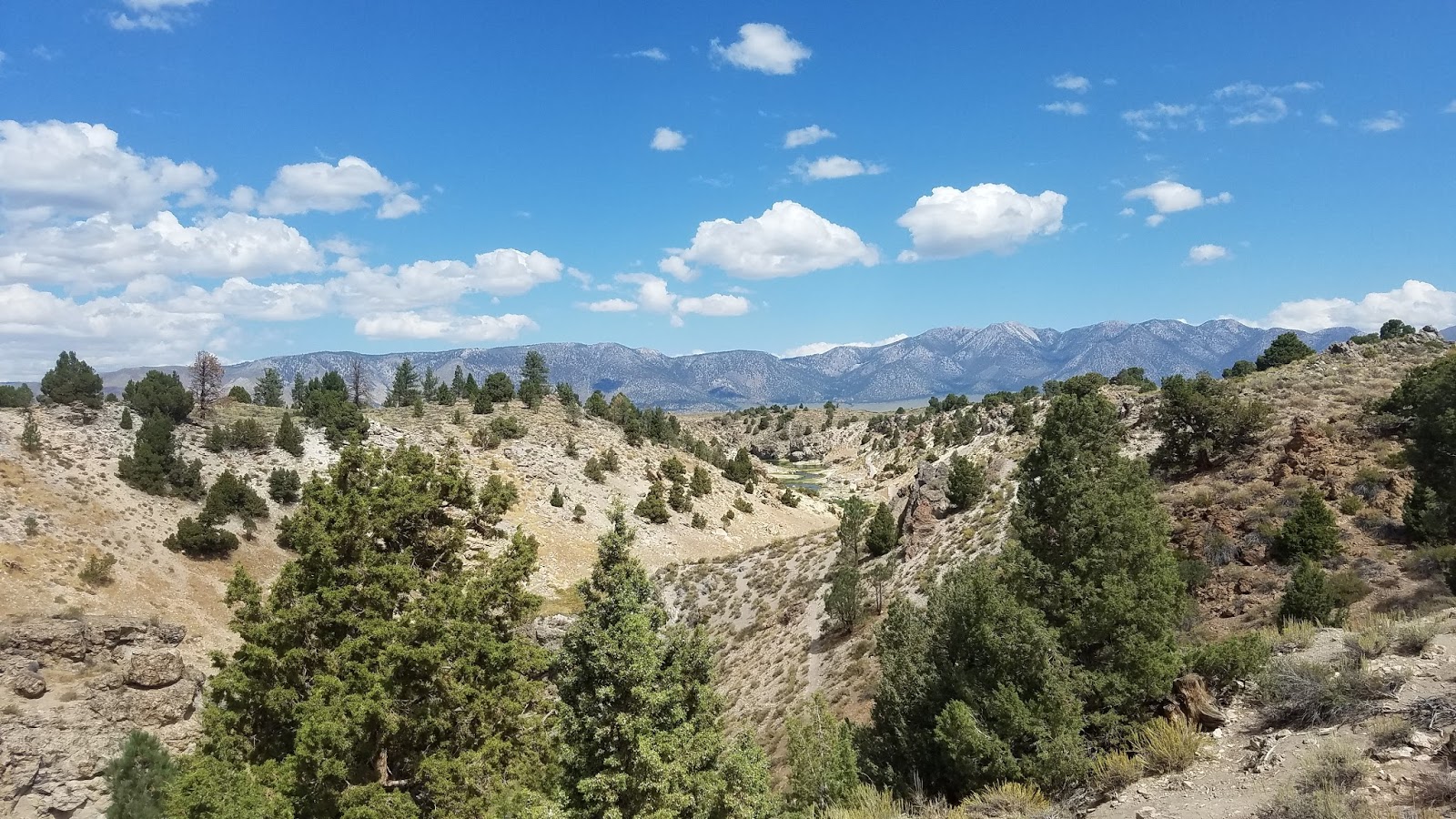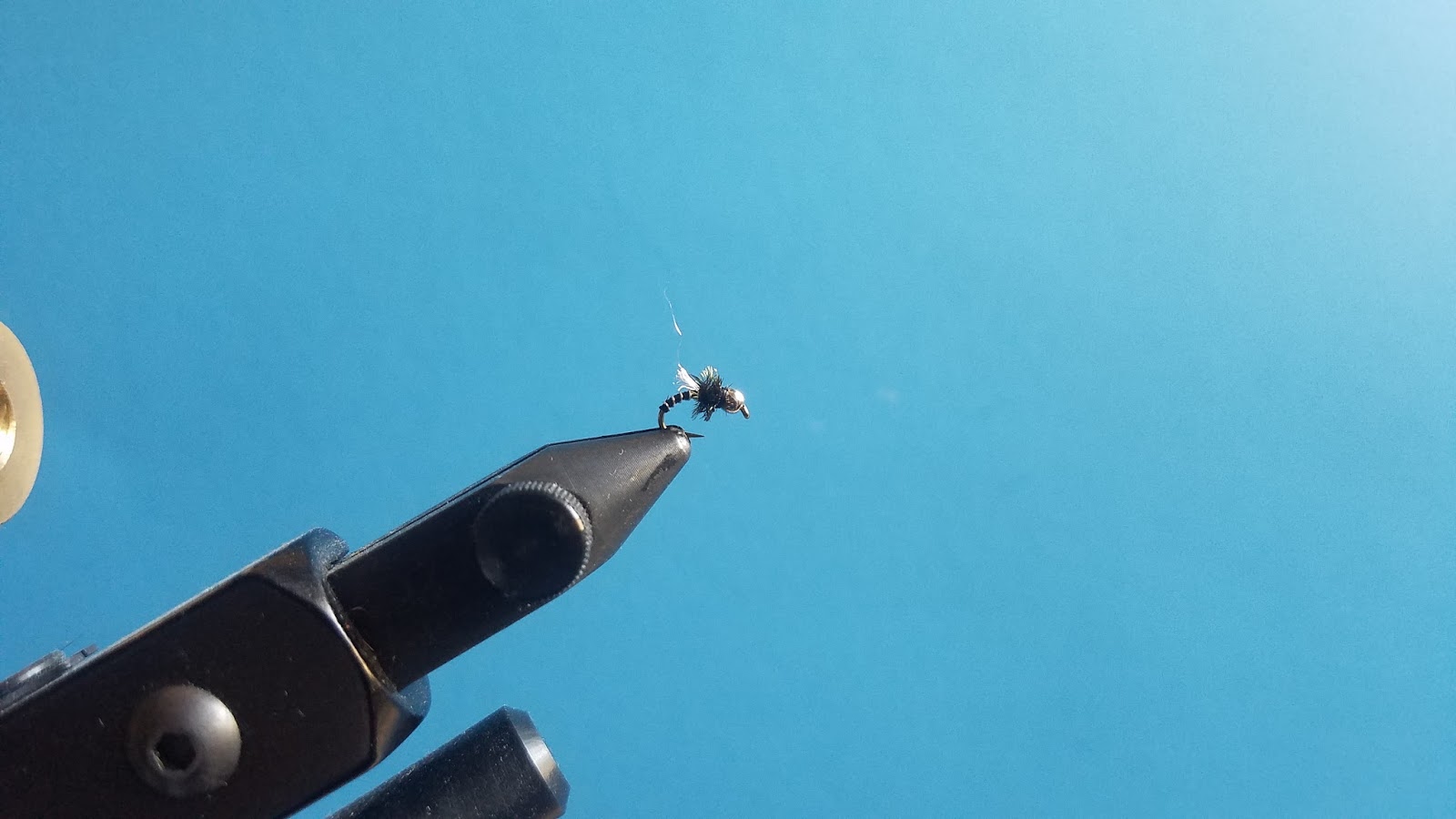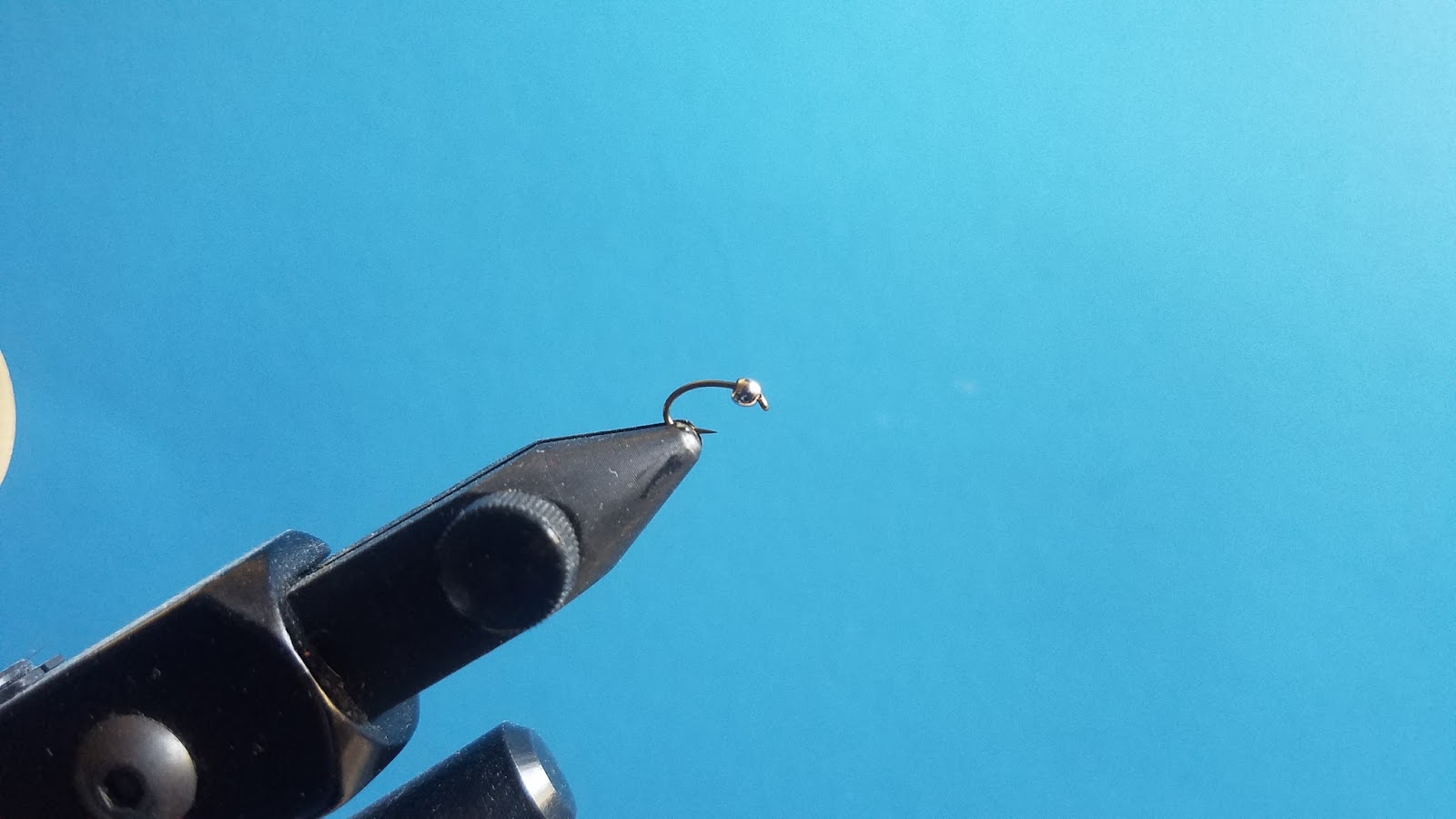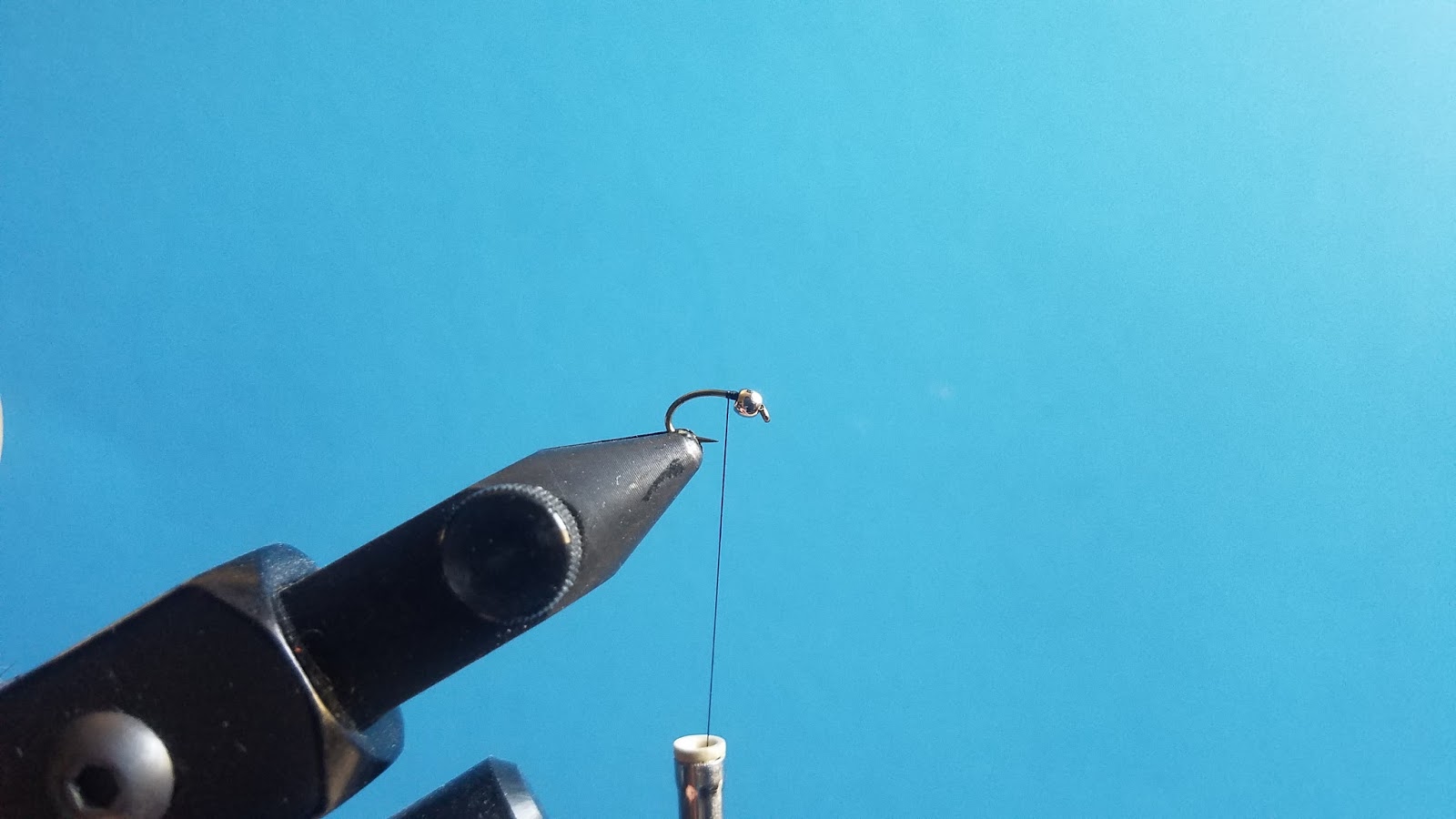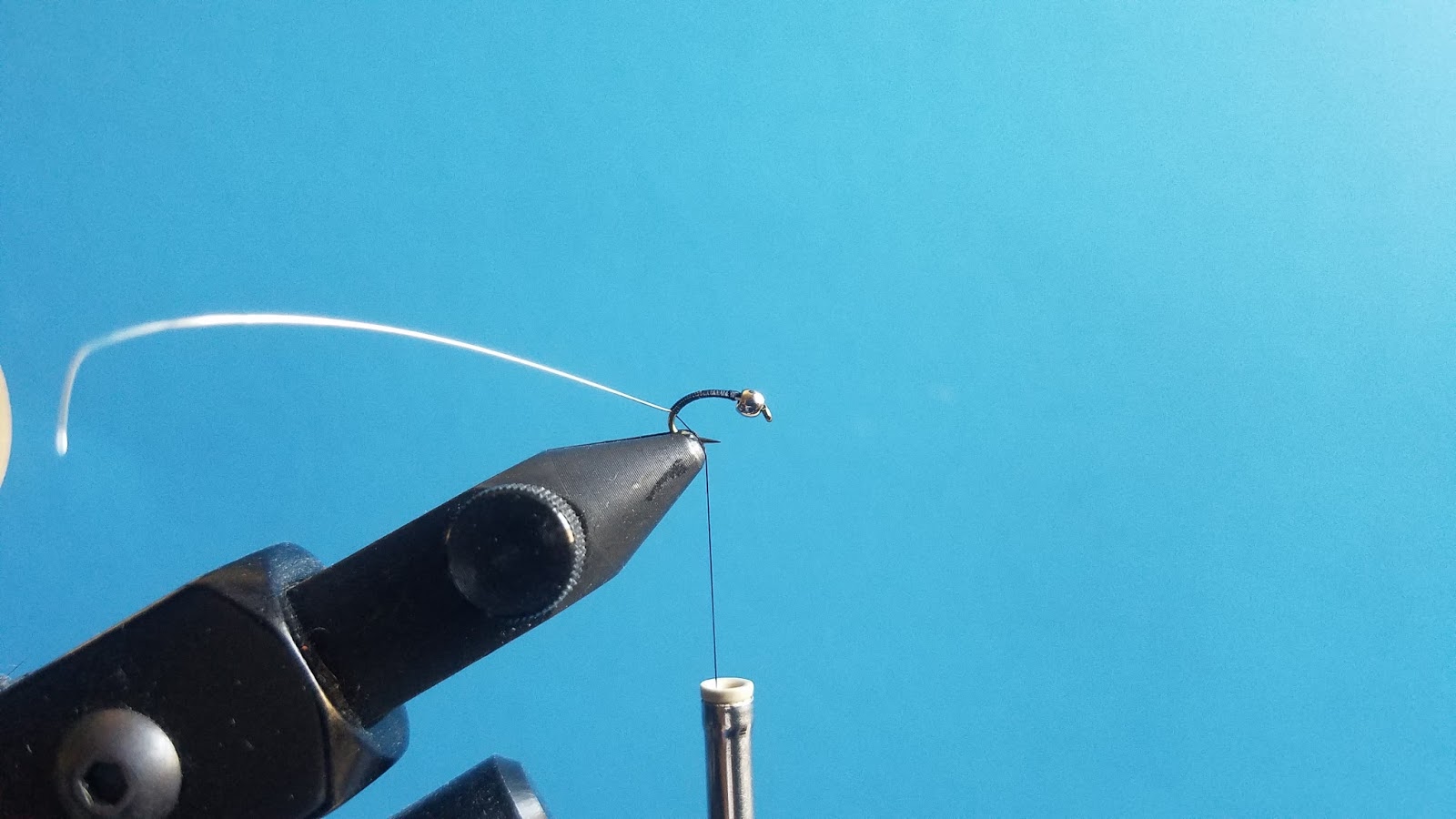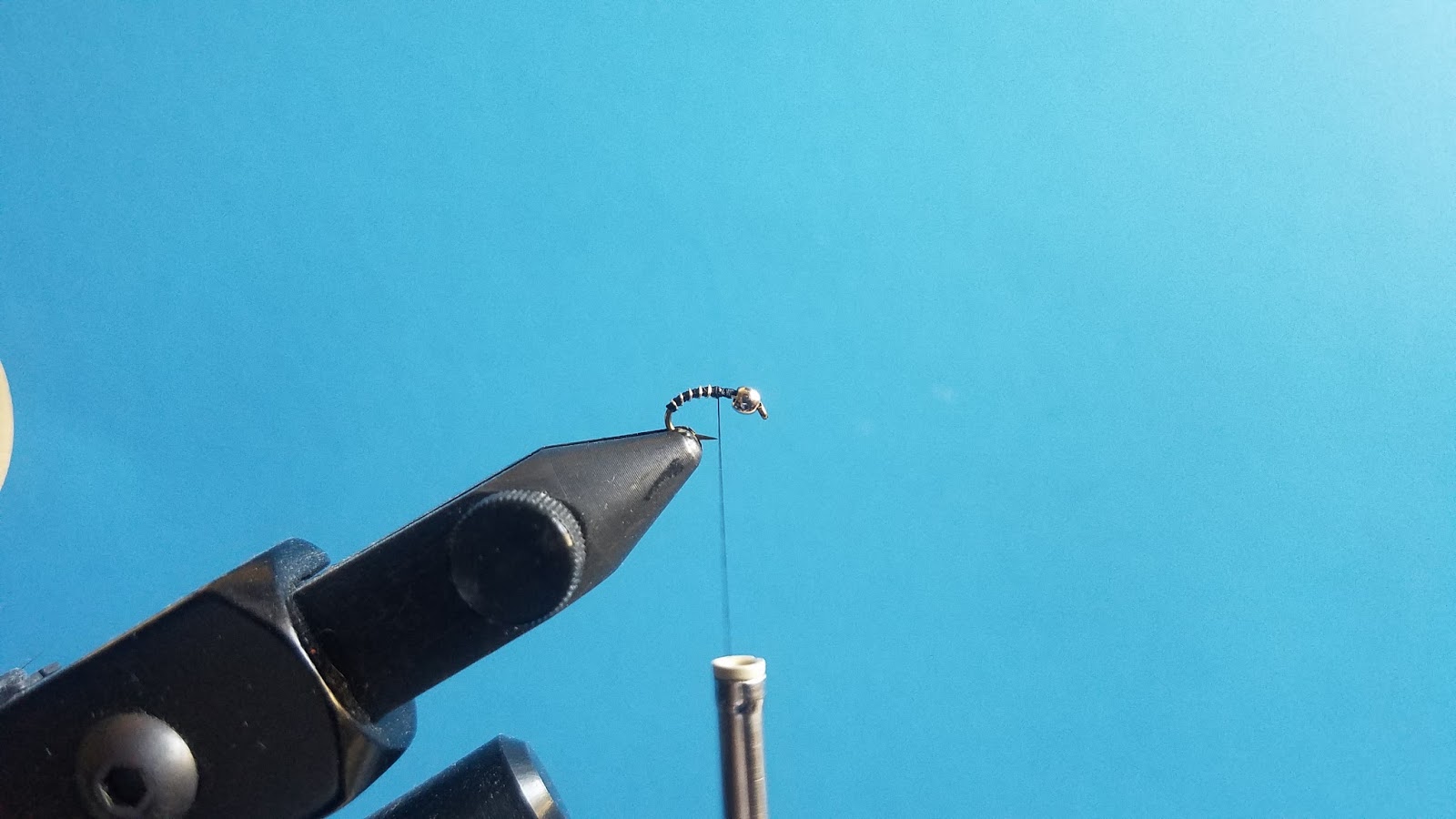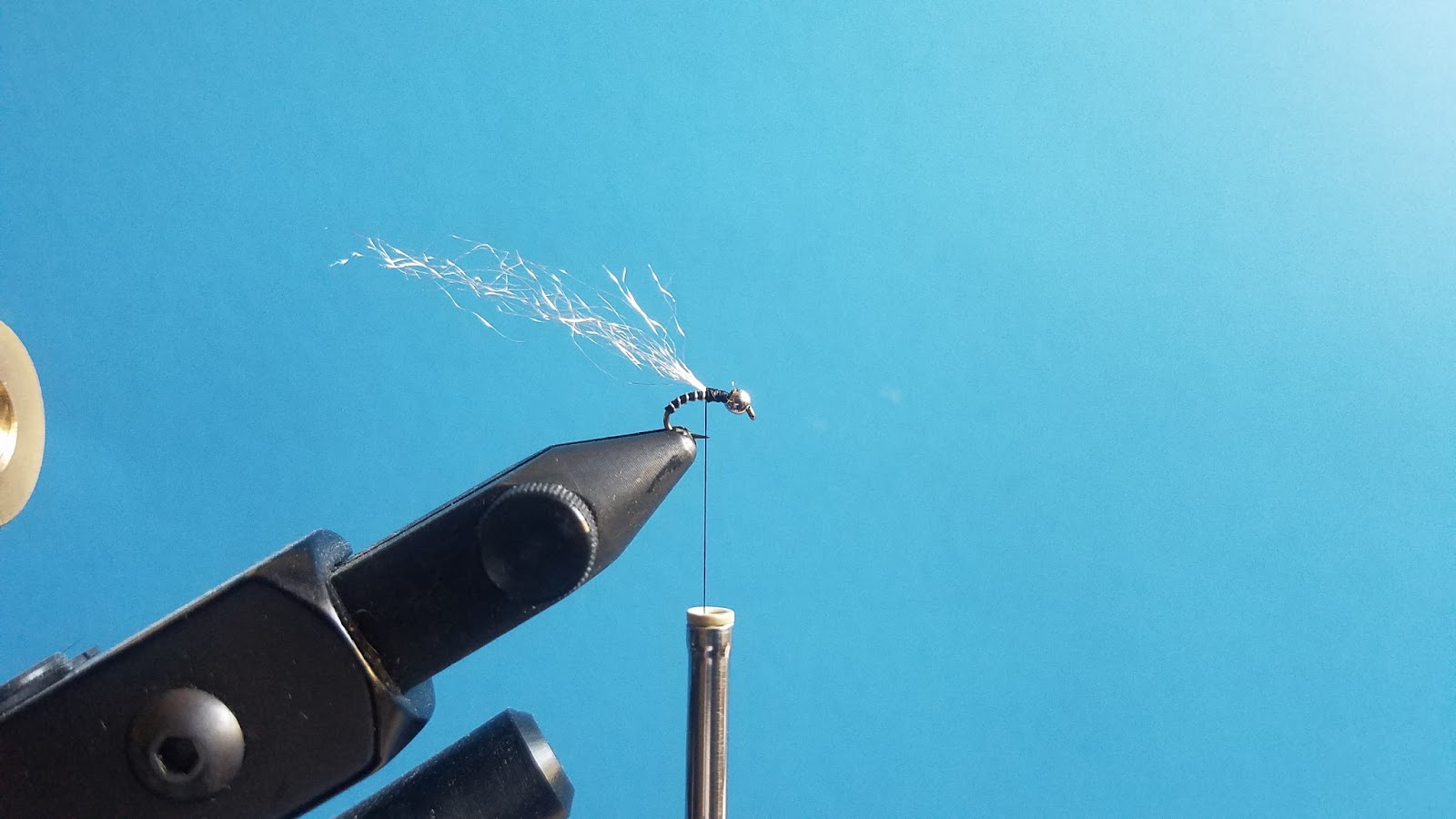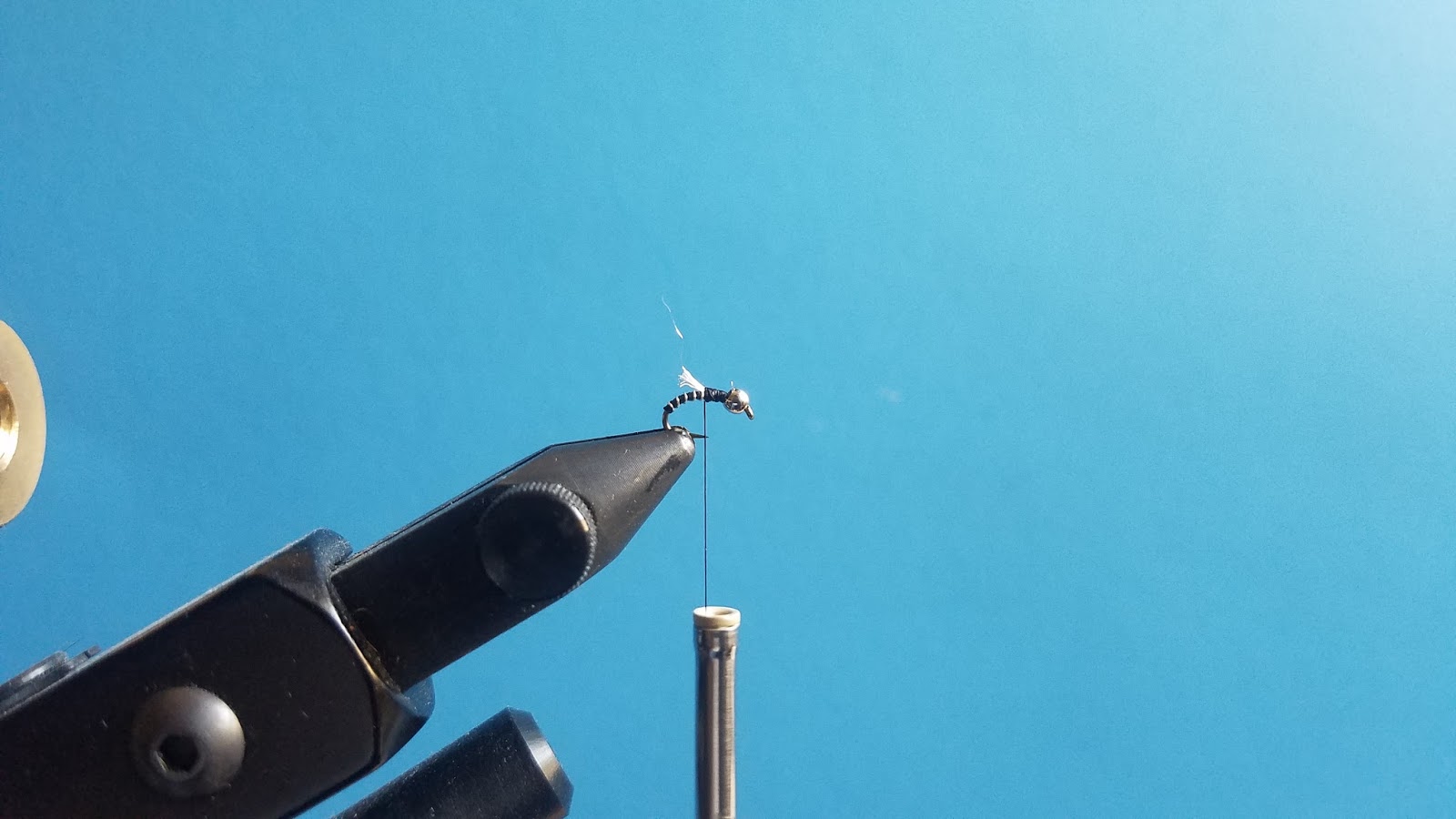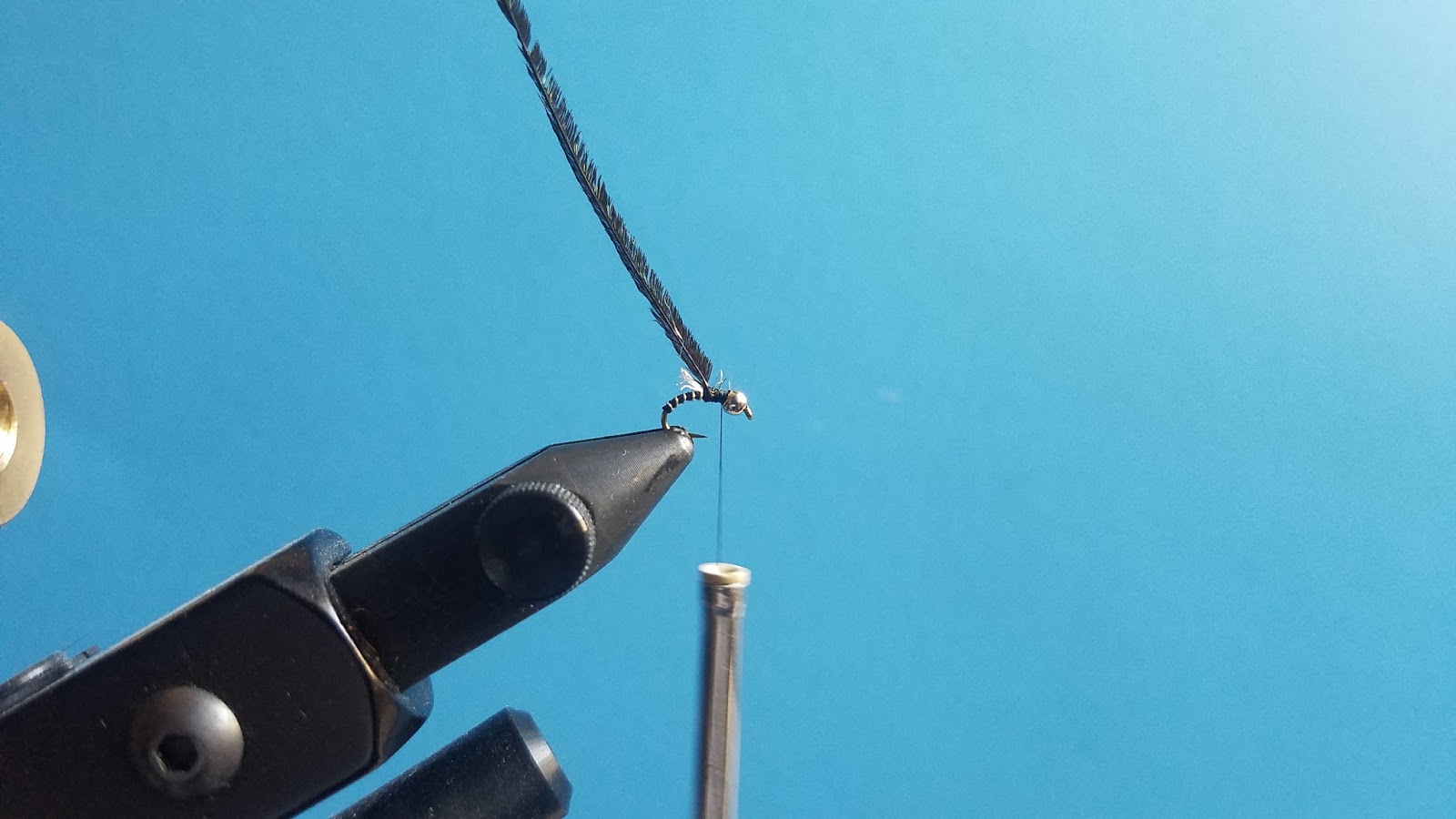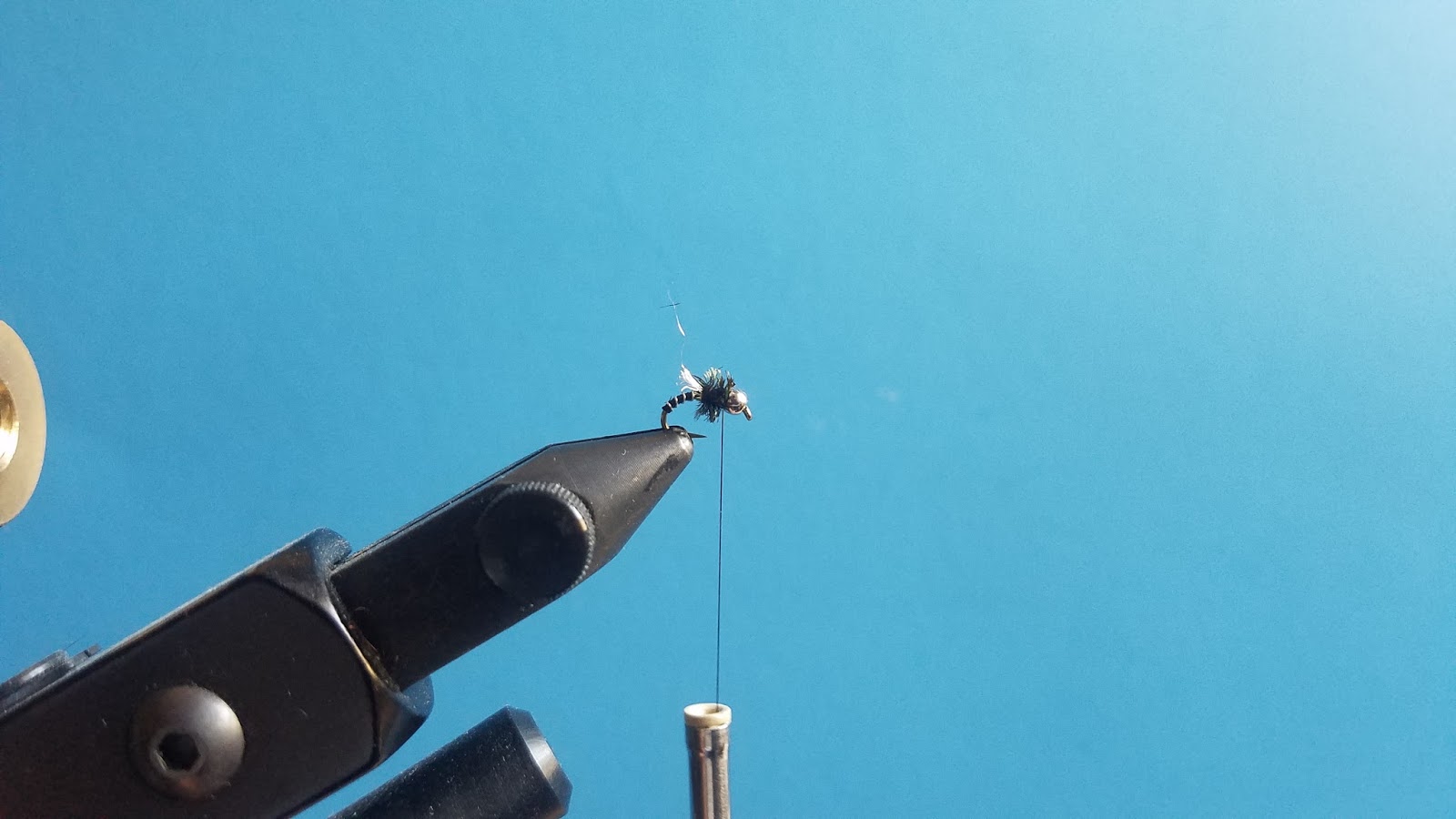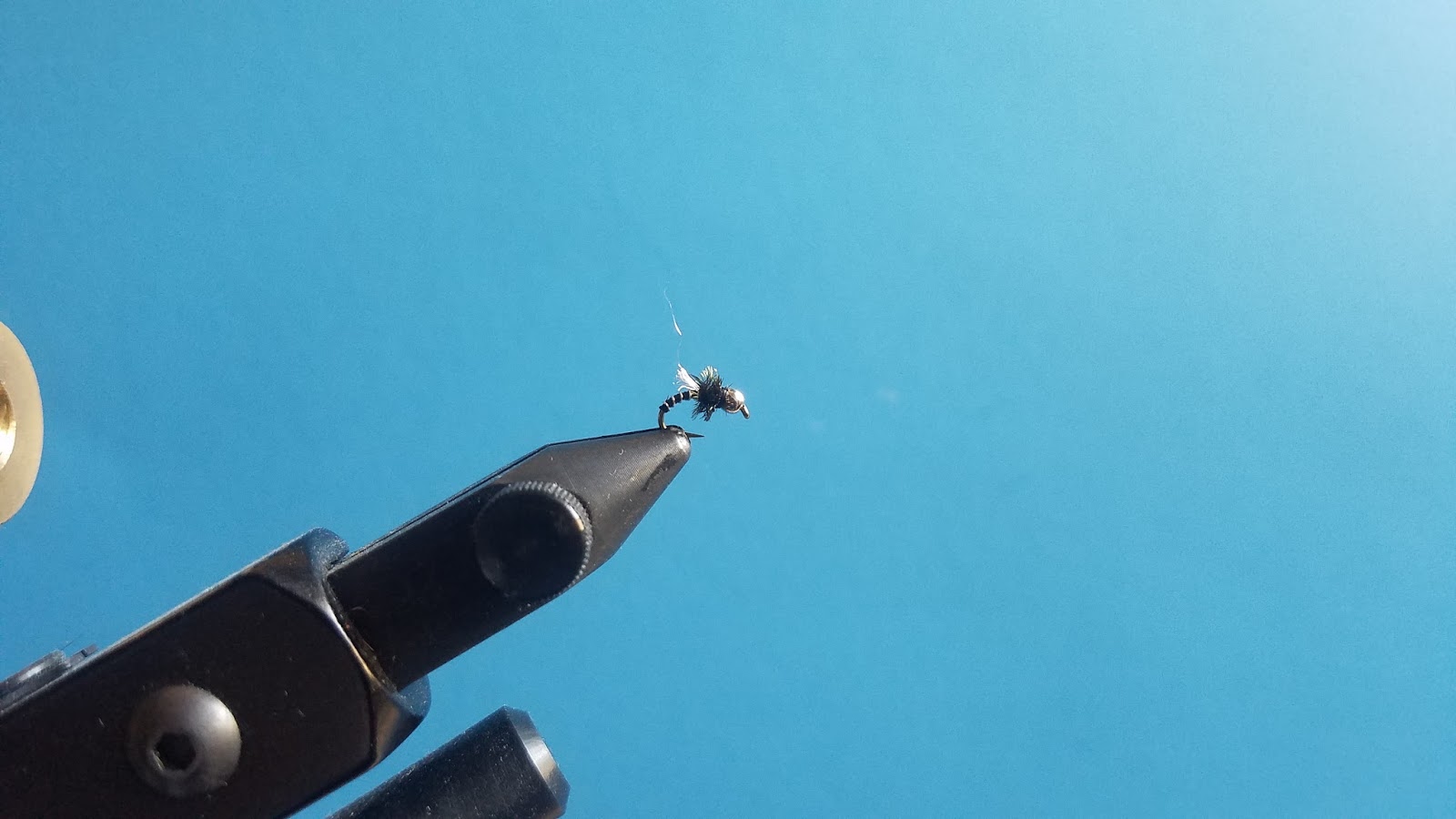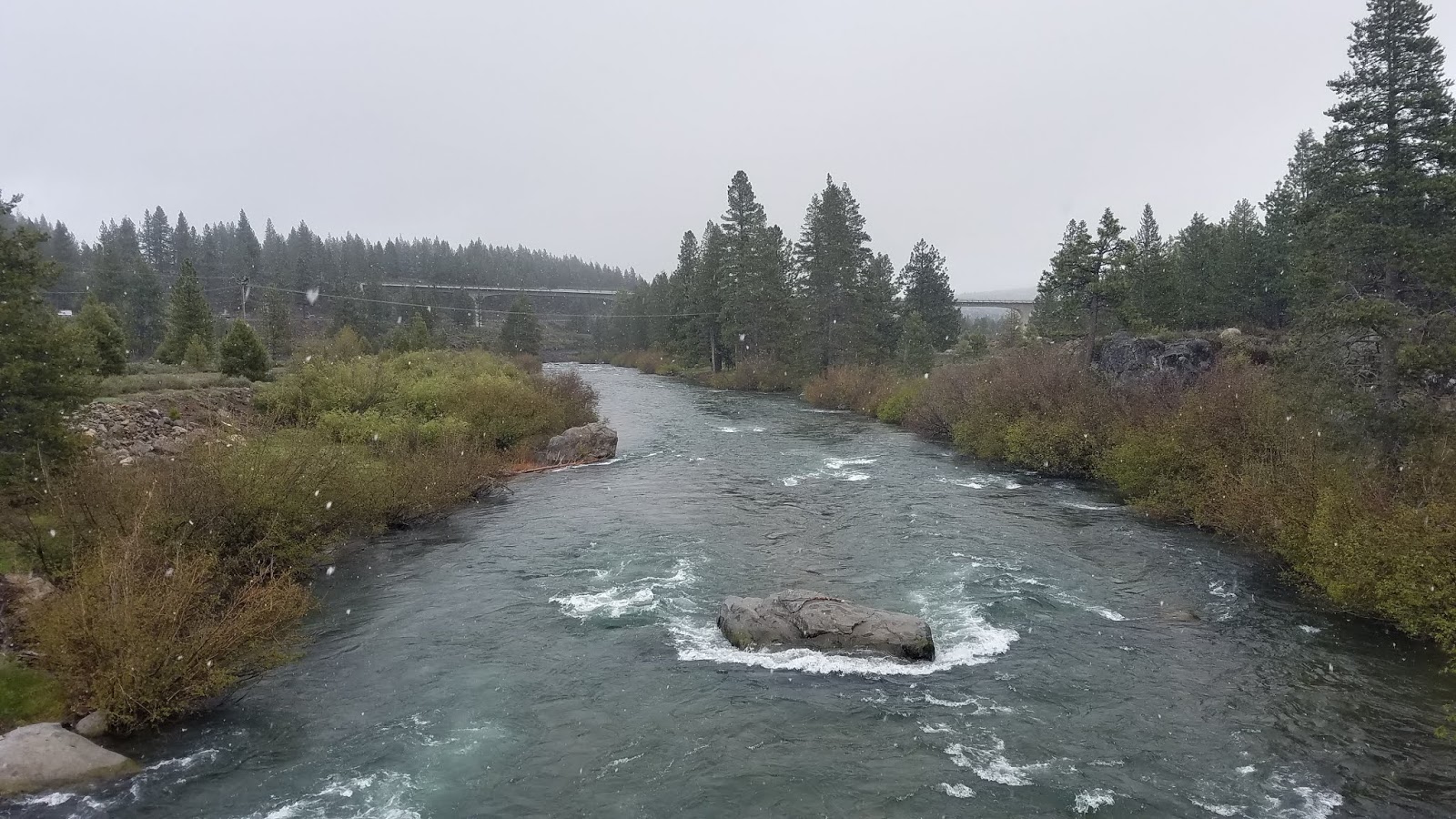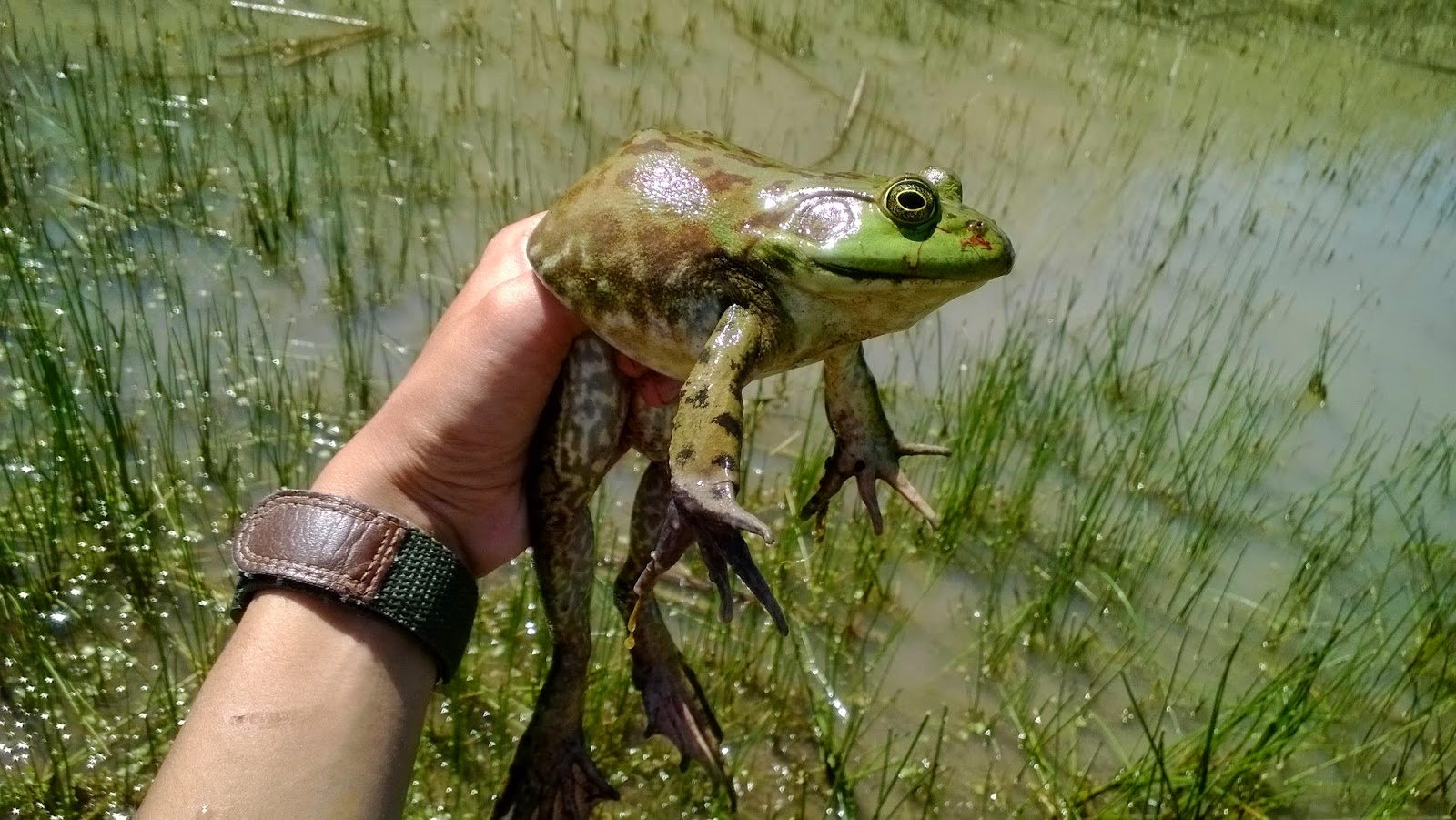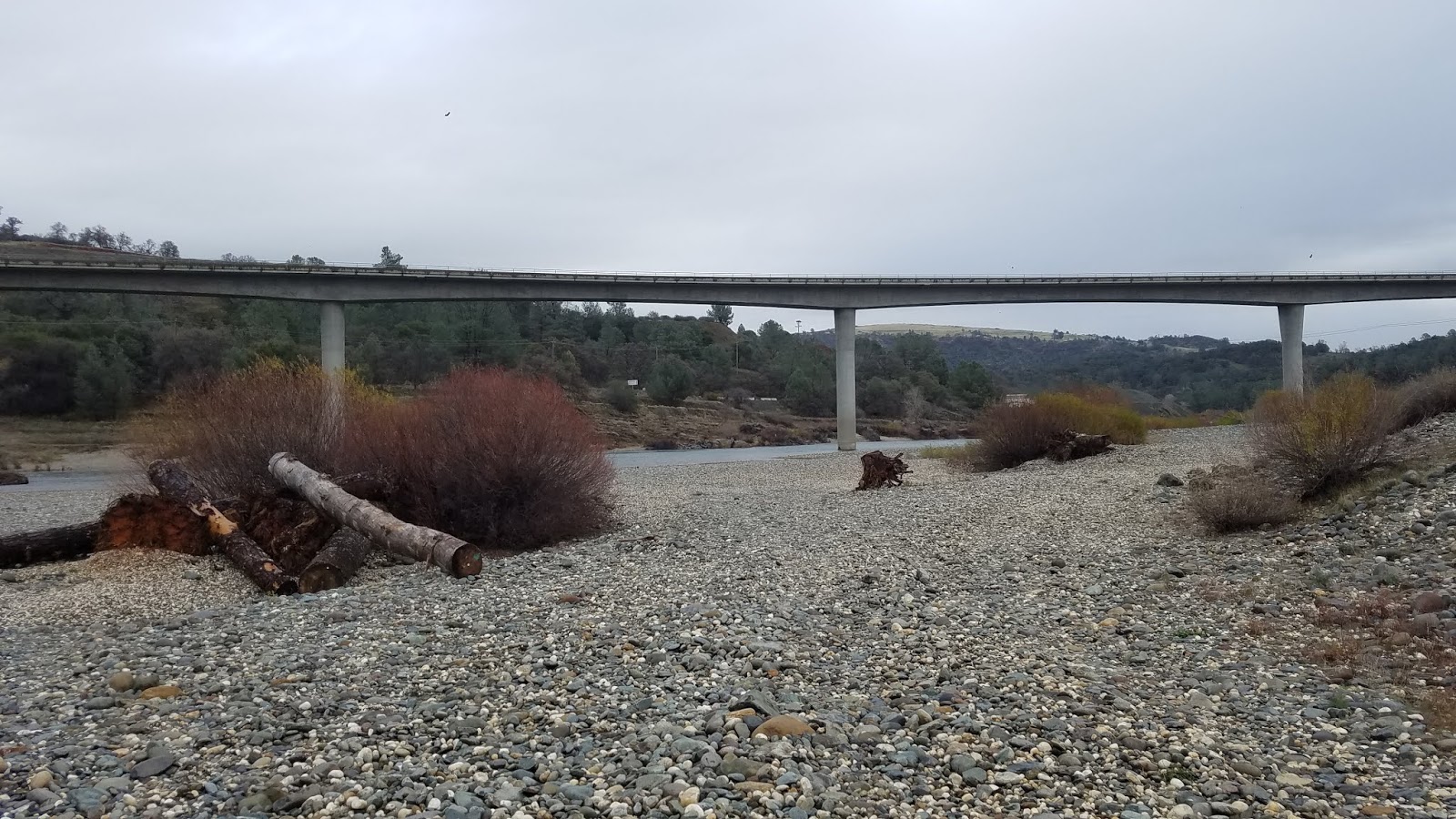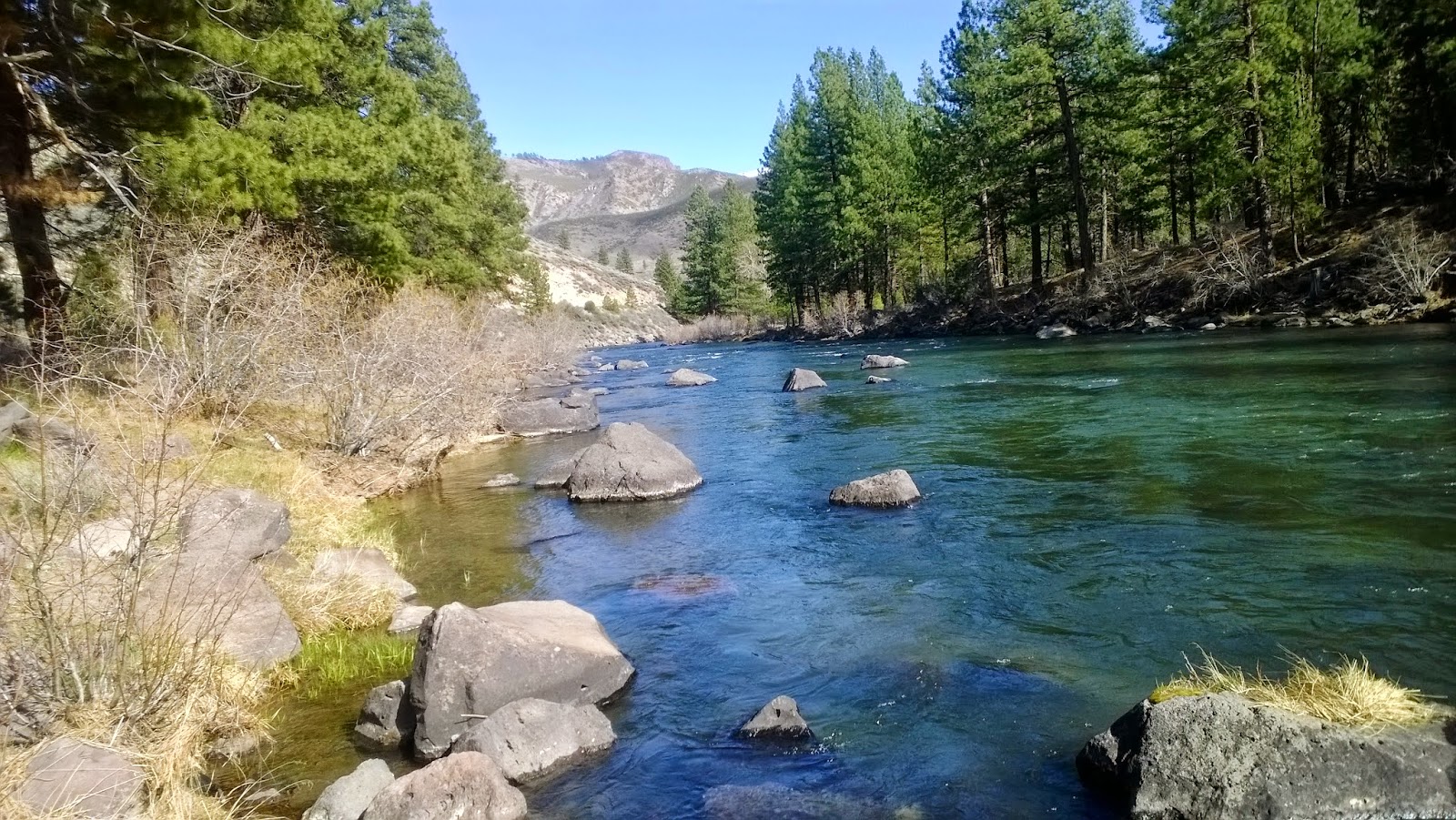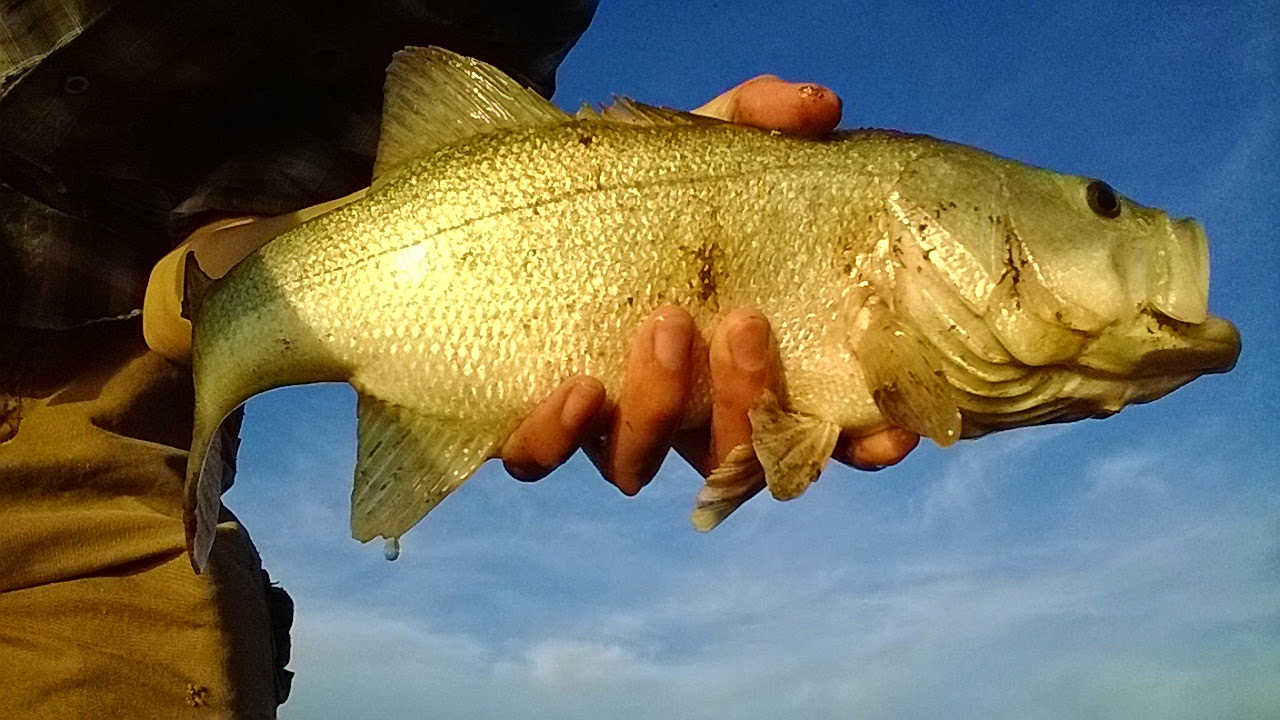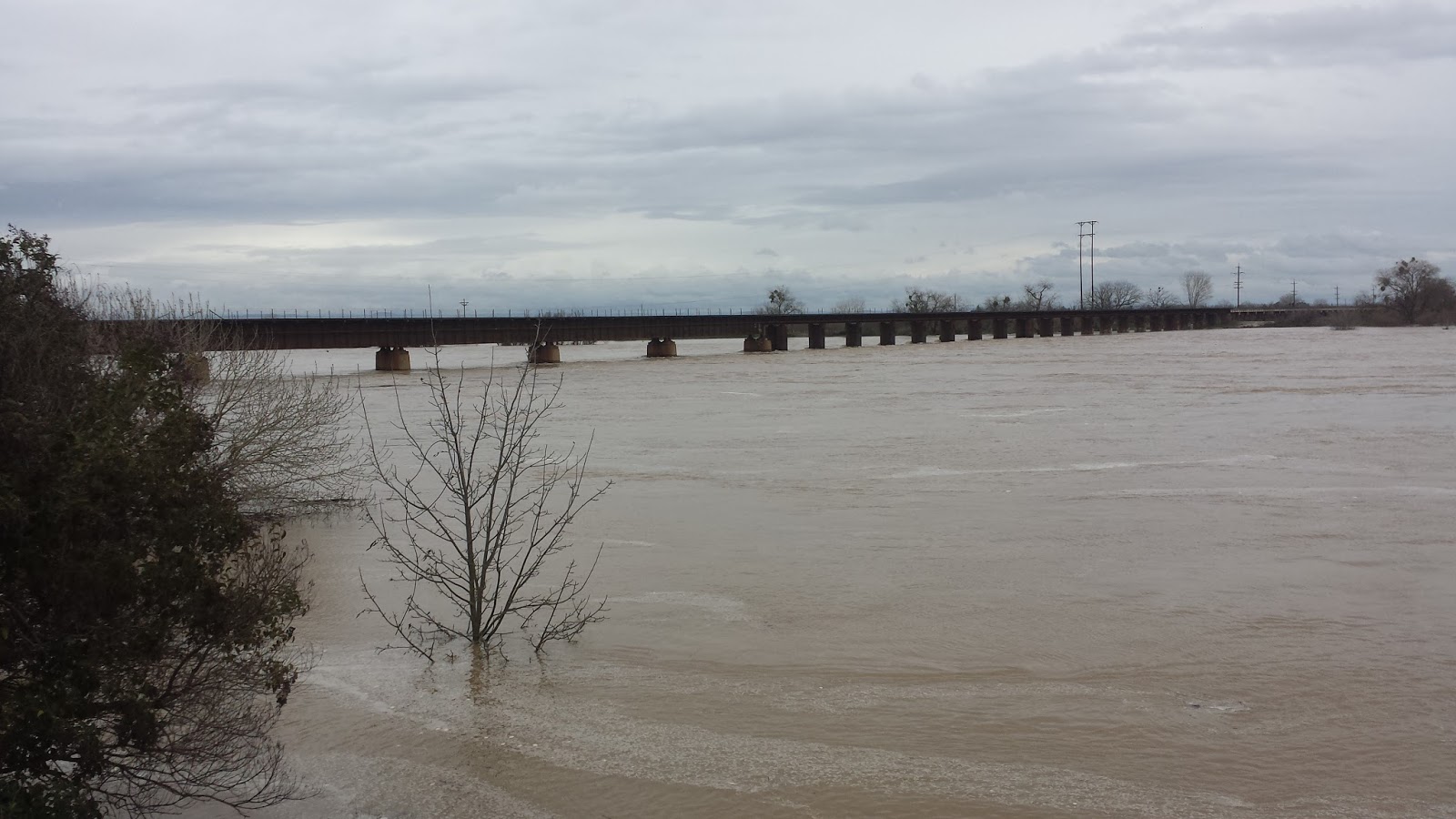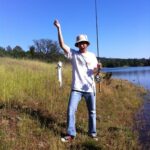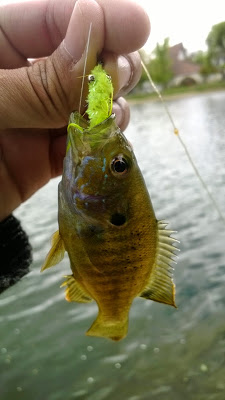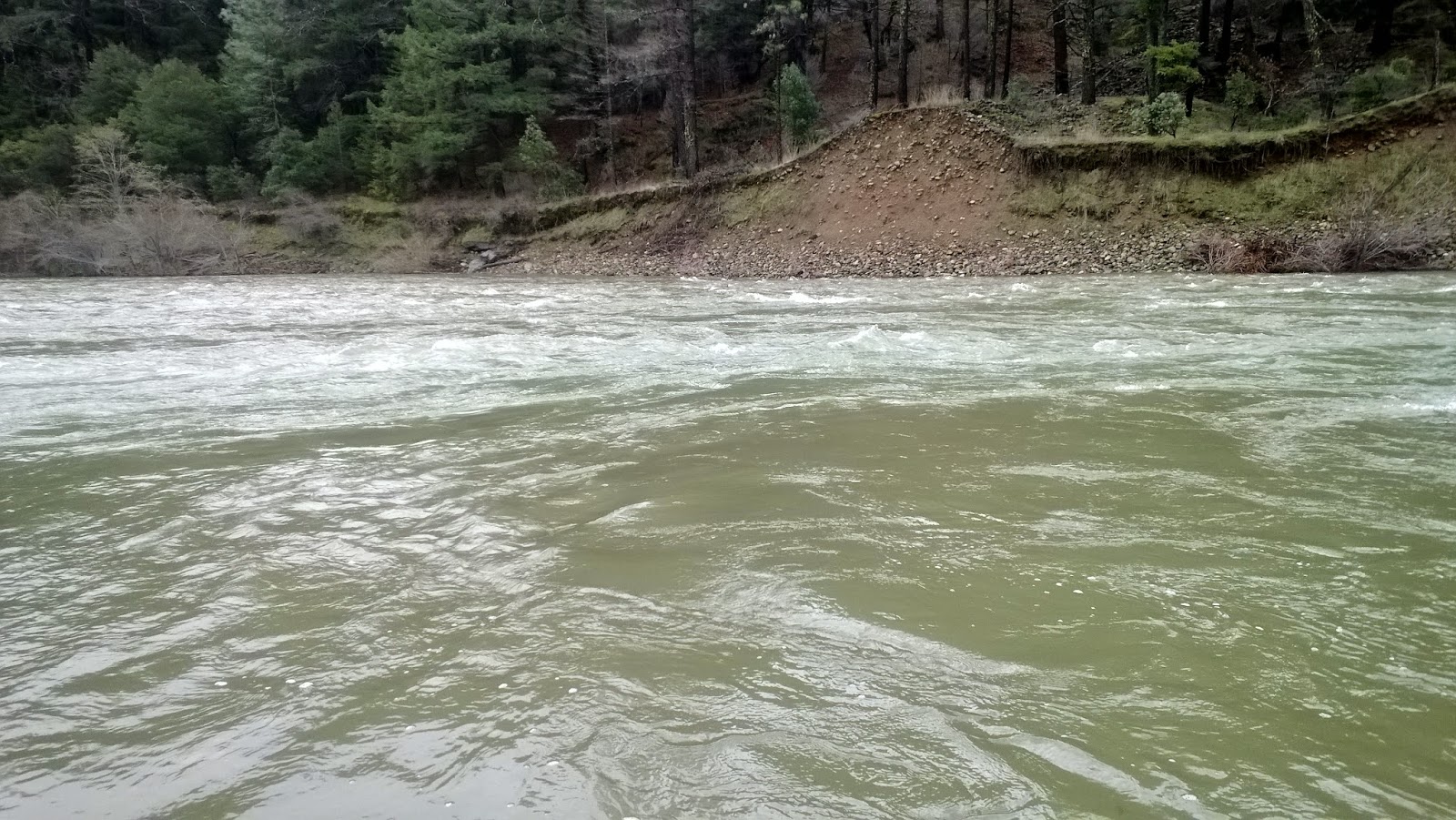Every “Fly Fishing California” book I’ve either scanned through or read includes a part of the state that I’ve always wanted to explore, the Eastern Sierras. My eyes were set on the East Walker River and Hot Creek where I was hoping to hook into the monster browns and bows that were rumored to live there. For the next four days I would be living off of burgers, fries, coca cola, and soup while exploring the beautiful Sierras.
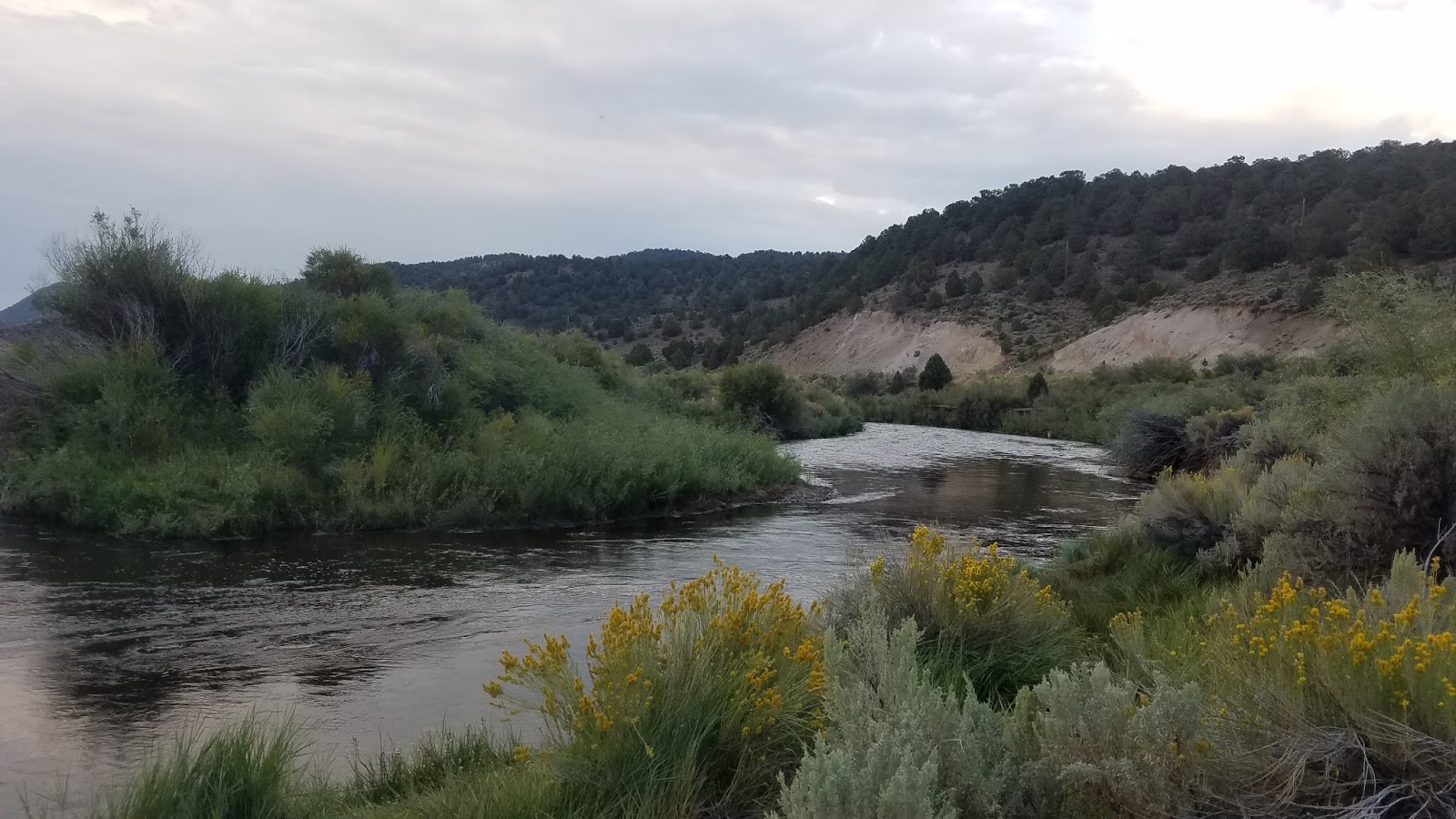 |
| East Walker River Morning |
East Walker River
The East Walker River was flowing at a good 250CFS a few days before my trip however it was bumped up to 340CFS by the time I set out. Although I’ve read that these flows are not the best flows the river was still very fishable. I made base camp at Paradise Shores which was very accommodating. Free showers, Wi-Fi, a place to cook my food, and only five minutes away from the river, I was going to be living like a king!
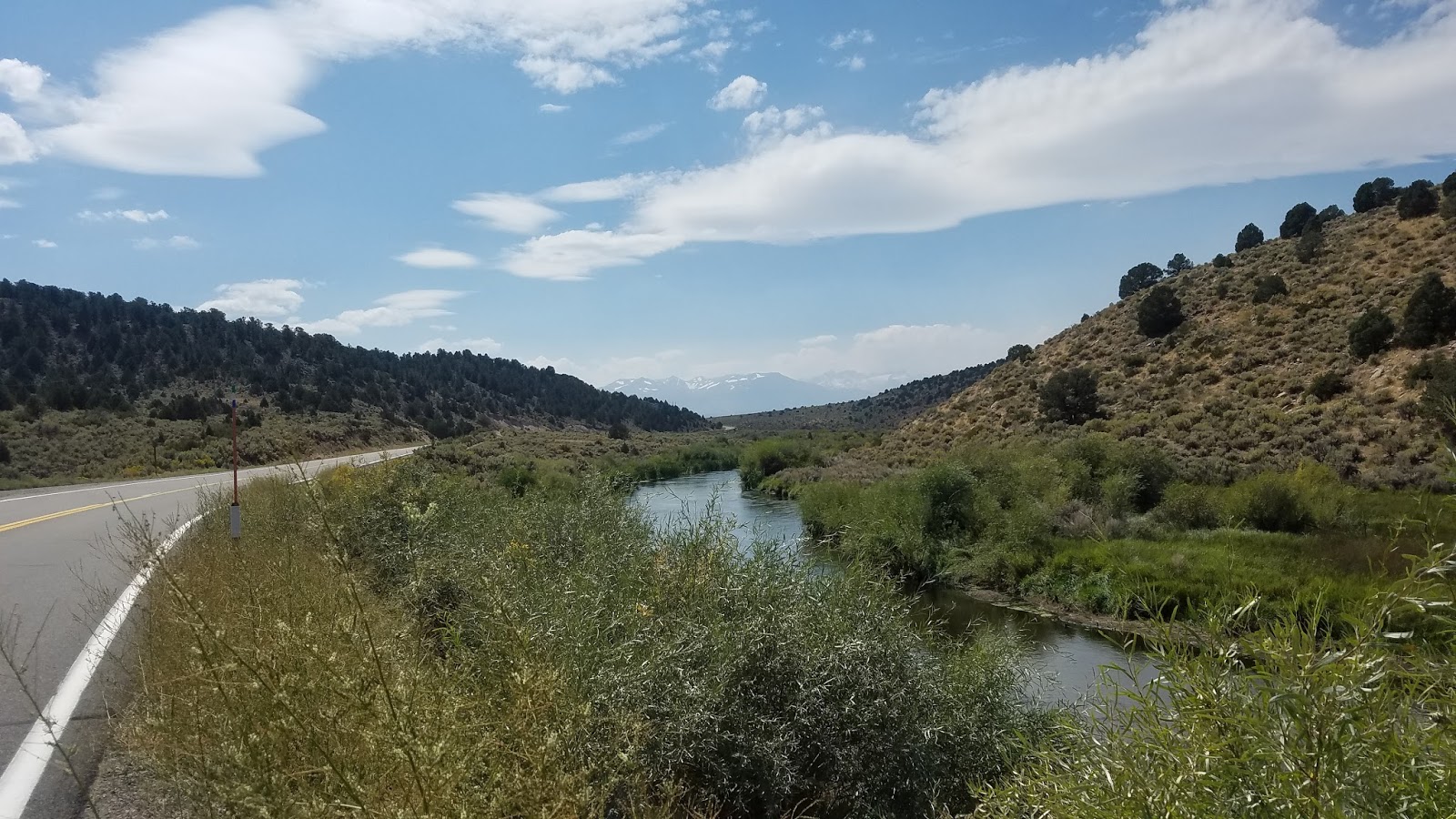 |
| Meadow Section of the EW |
The East Walker River is not a large river by any means. Most of the river is about ten to fifteen feet wide with a few deep slots riding along the willow covered banks. I spent most of my time fishing the Miracle Mile which stretches from the Big Hole to HWY 182 bridge. The water had a tea-colored tint to it with a lot of good vegetation growth. I was able to get around pretty easily and had little difficulty maneuvering around the Miracle Mile section at these flows.
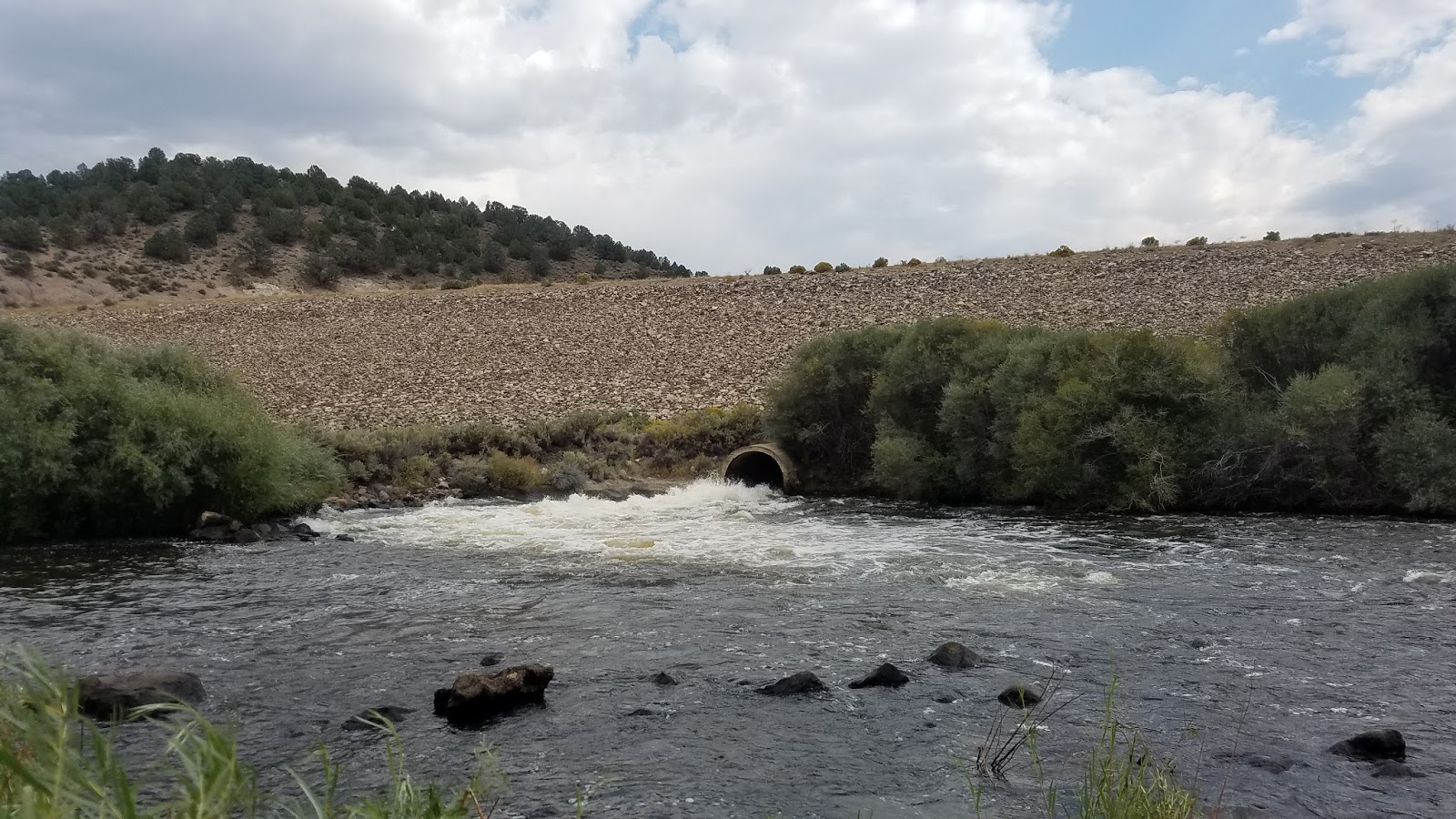 |
| Big Hole |
After setting up camp and wetting my line on the EW for the first time I noticed an important key factor to this fishery; there were a ton of things for these fish to eat. Along the banks I found and caught Sacramento perch, mountain whitefish, chubs, crayfish, and an assortment of aquatic insects. With enough feed to go around it’s no surprise how these fish get so big. I spent most of my time throwing streamers hoping to entice a monster brown but 95% of the fish I caught were rainbows that were a quality 14” – 16”. I caught so many rainbows that I started quick-releasing them once I got a good look at them. Throughout this visit to the EW I only caught three browns and a few new species that I happily added to my list.
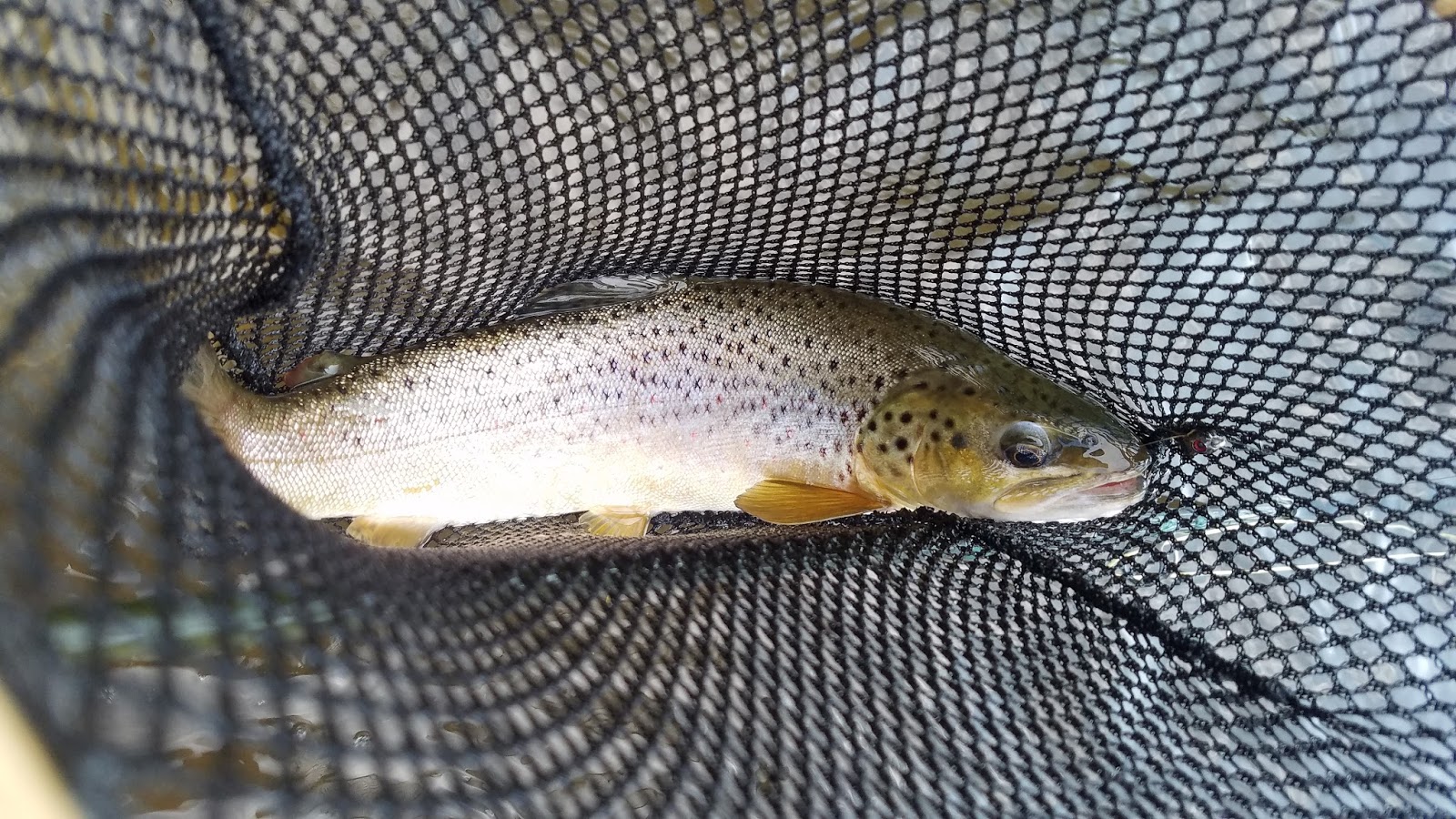 |
| Streamer Eating Brown |
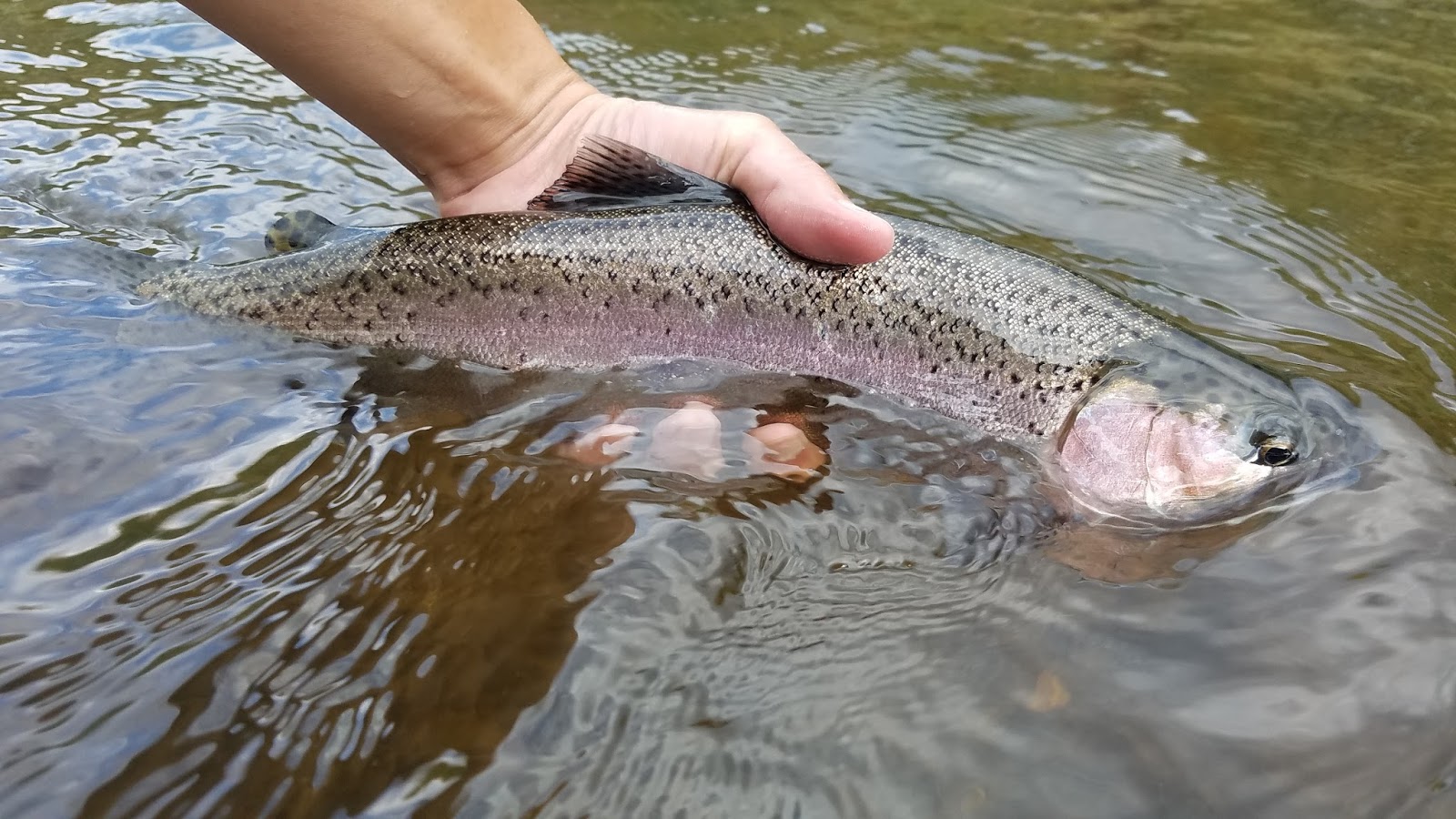 |
| EW Rainbow |
 |
| Tui Chub on the EW |
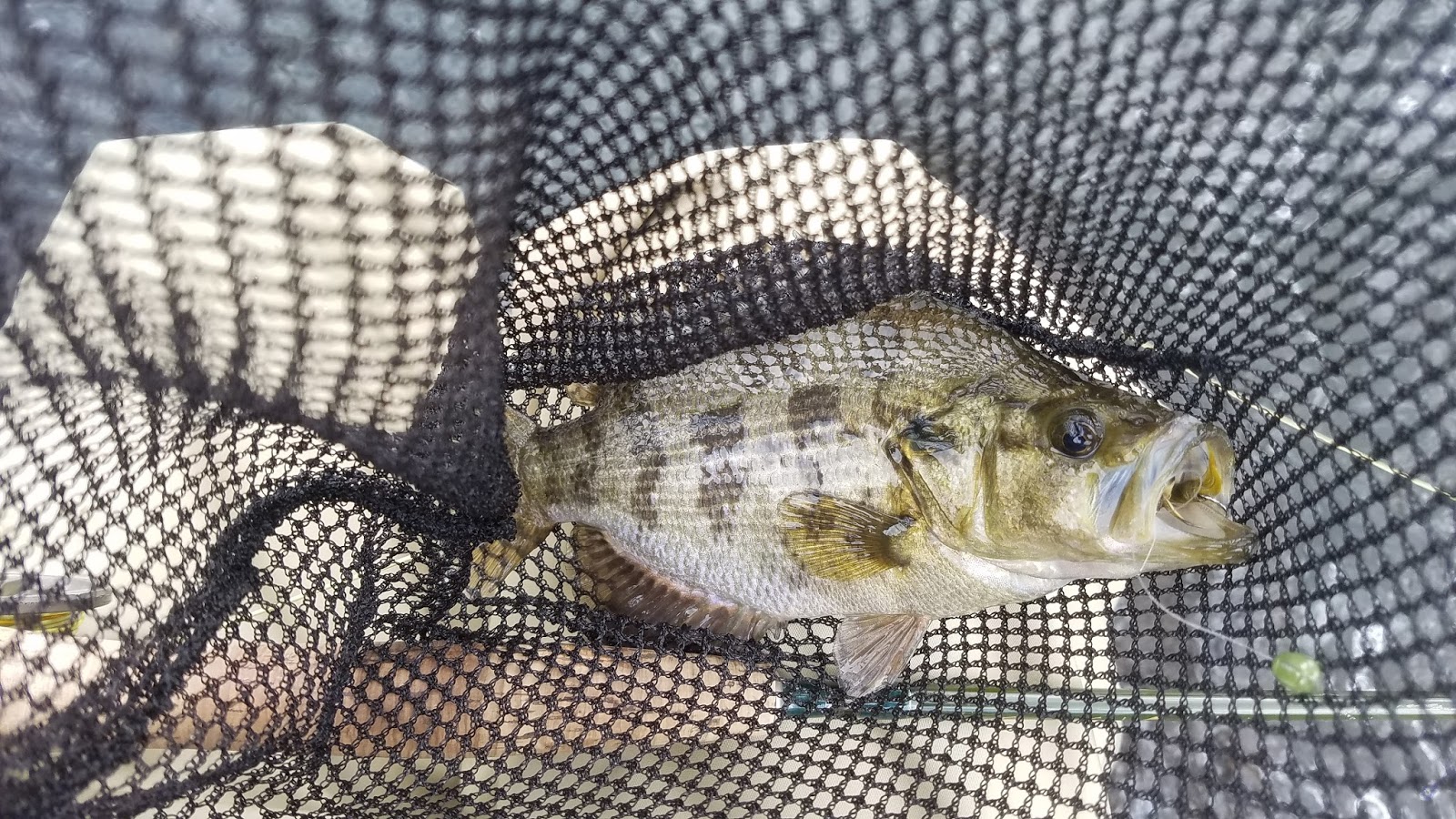 |
| EW Sacramento Perch |
I spent three days fishing the crap out of the EW. I explored the canyon section below HWY 182 and even bought a Nevada fishing license to check out the Rosachi Ranch section. Both sections were unfishable due to the higher flows which limited my trip to the Miracle Mile.
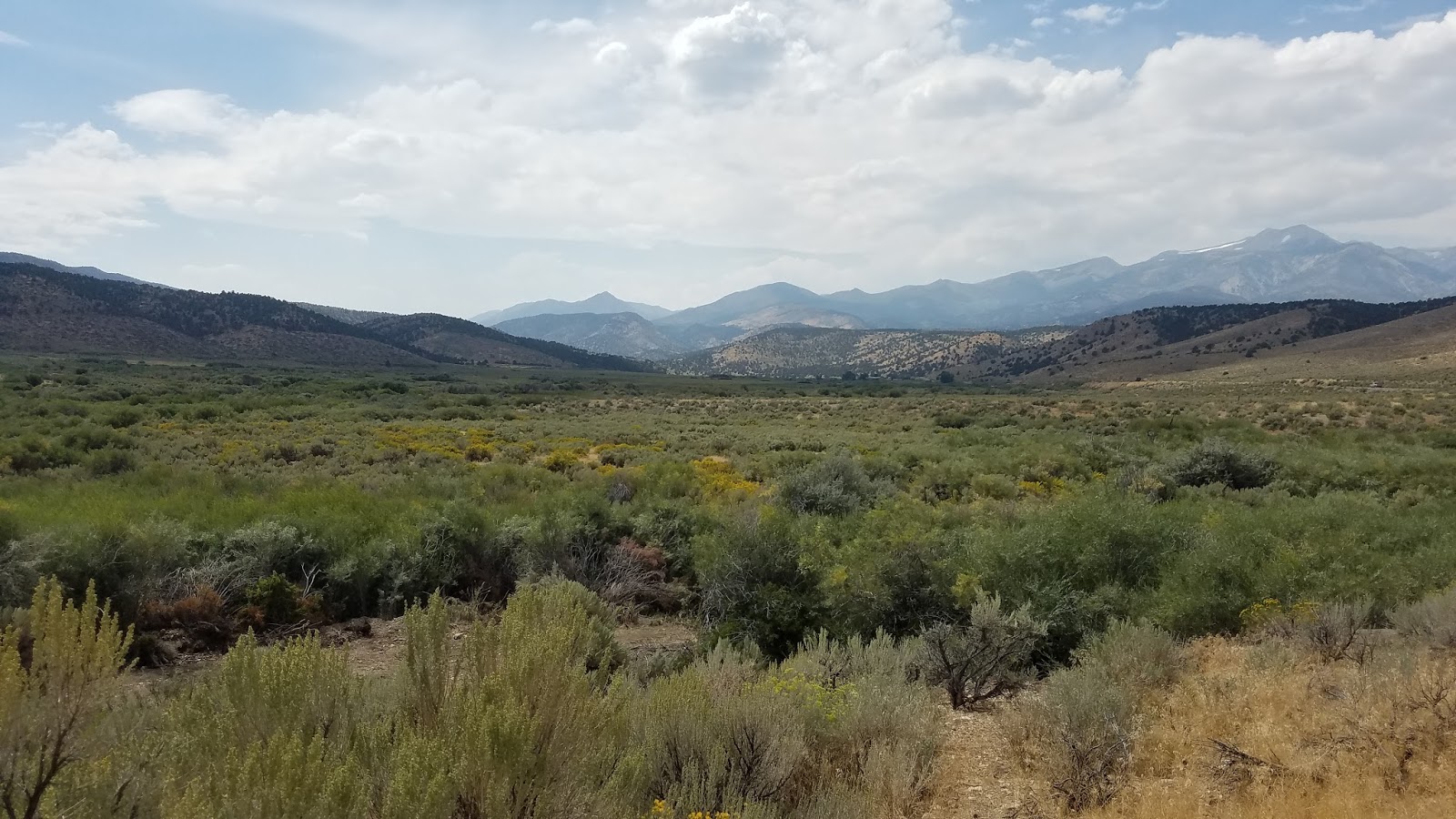 |
| Nevada Section of the EW |
After three days of fishing my time on the EW was coming to an end so I decided to try my luck nymphing the last morning of my stay. I covered the same water that I’d familiarized myself with and hooked a nice brown but still nothing worth bragging about.
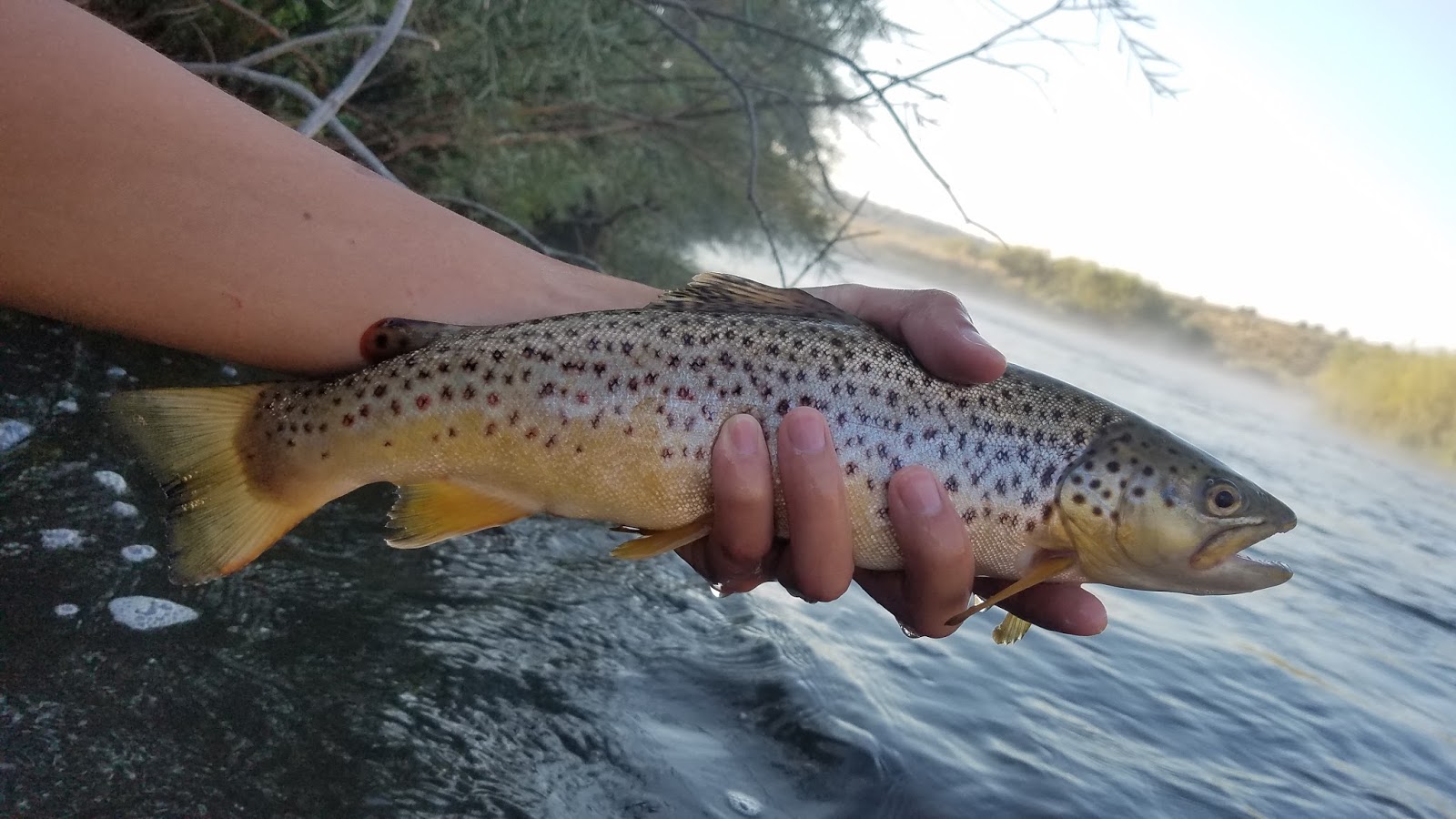 |
| Nice EW Brown |
With check-out time looming closer and closer, I finally watched as my indicator went down and I felt the weight of a trophy fish. I played the fish quickly, netted it, took a few pictures, and called it a successful trip on the EW.
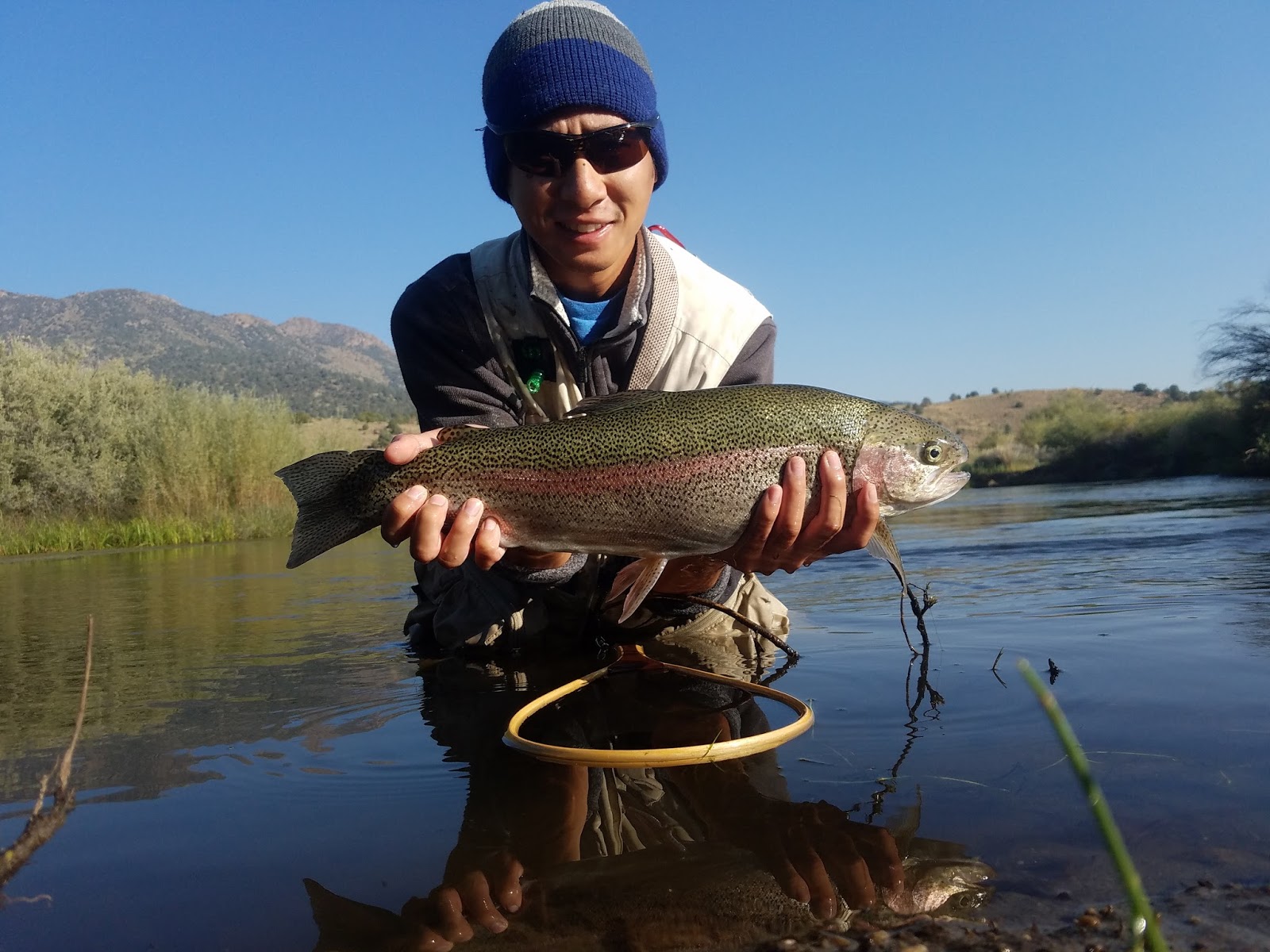 |
| Solid EW Trophy Bow |
Hot Creek
Hot Creek is an interesting fishery just a few miles outside of Mammoth Lakes. The public area that many anglers fish is a short one mile section between the end of Hot Creek Ranch and a thermal spring that to this day is still boiling hot. This section of Hot Creek runs through a small steep canyon surrounded by beautiful volcanic formations that look out of this earth. Full of wild browns, rainbows, and potential 20”+ trophies, Hot Creek was definitely an Eastern Sierra stream that I had to check out.
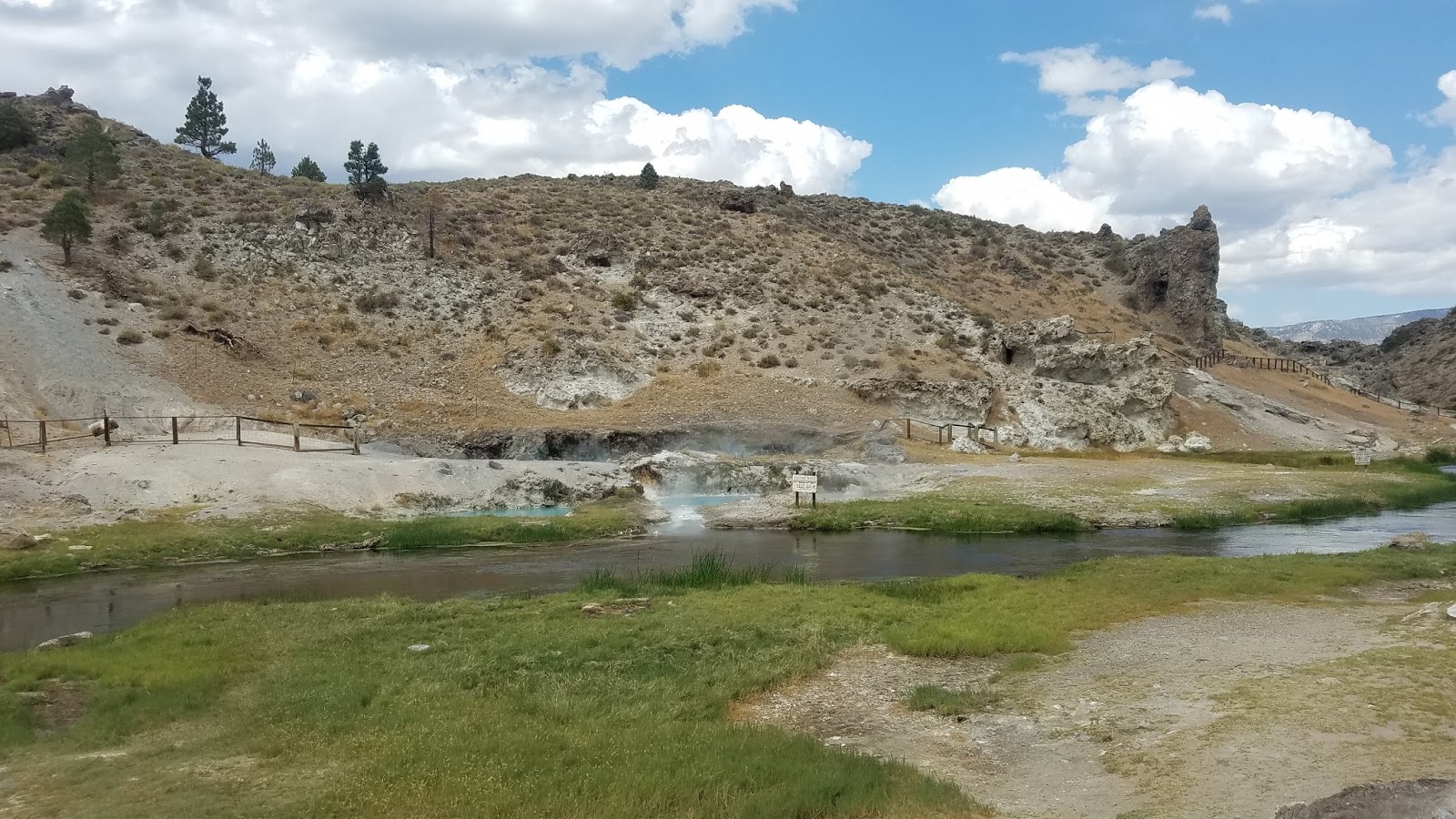 |
| Hot Creek Thermal Spring |
When I first arrived on Hot Creek I wasn’t sure what to expect. I’ve read many articles about the creek but didn’t have a mental image of what the creek looked like. I was surprised to find how narrow and shallow the creek was. I threw a hopper pattern for most of the day and caught browns and rainbows.
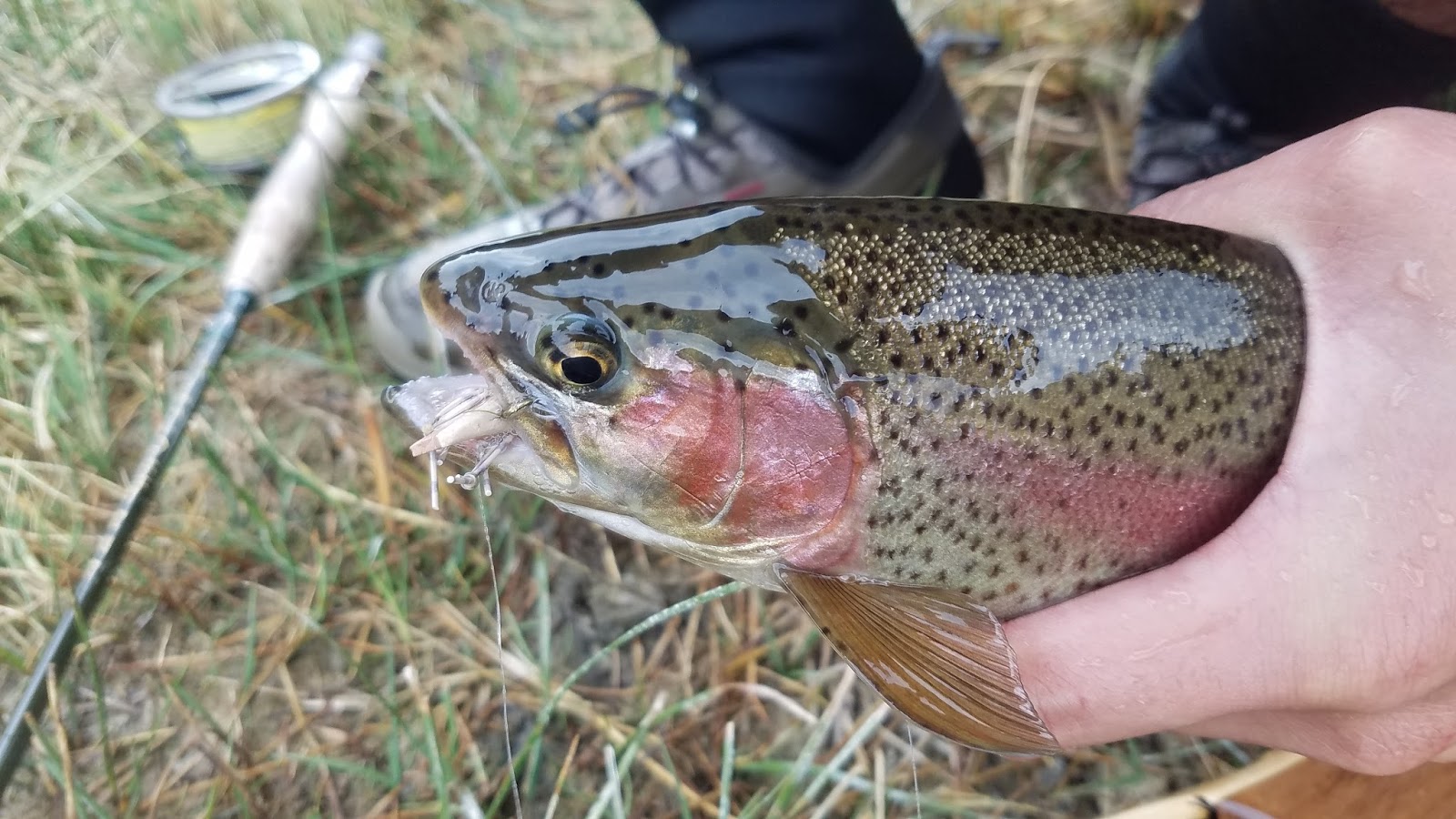 |
| Nice Hopper Eater |
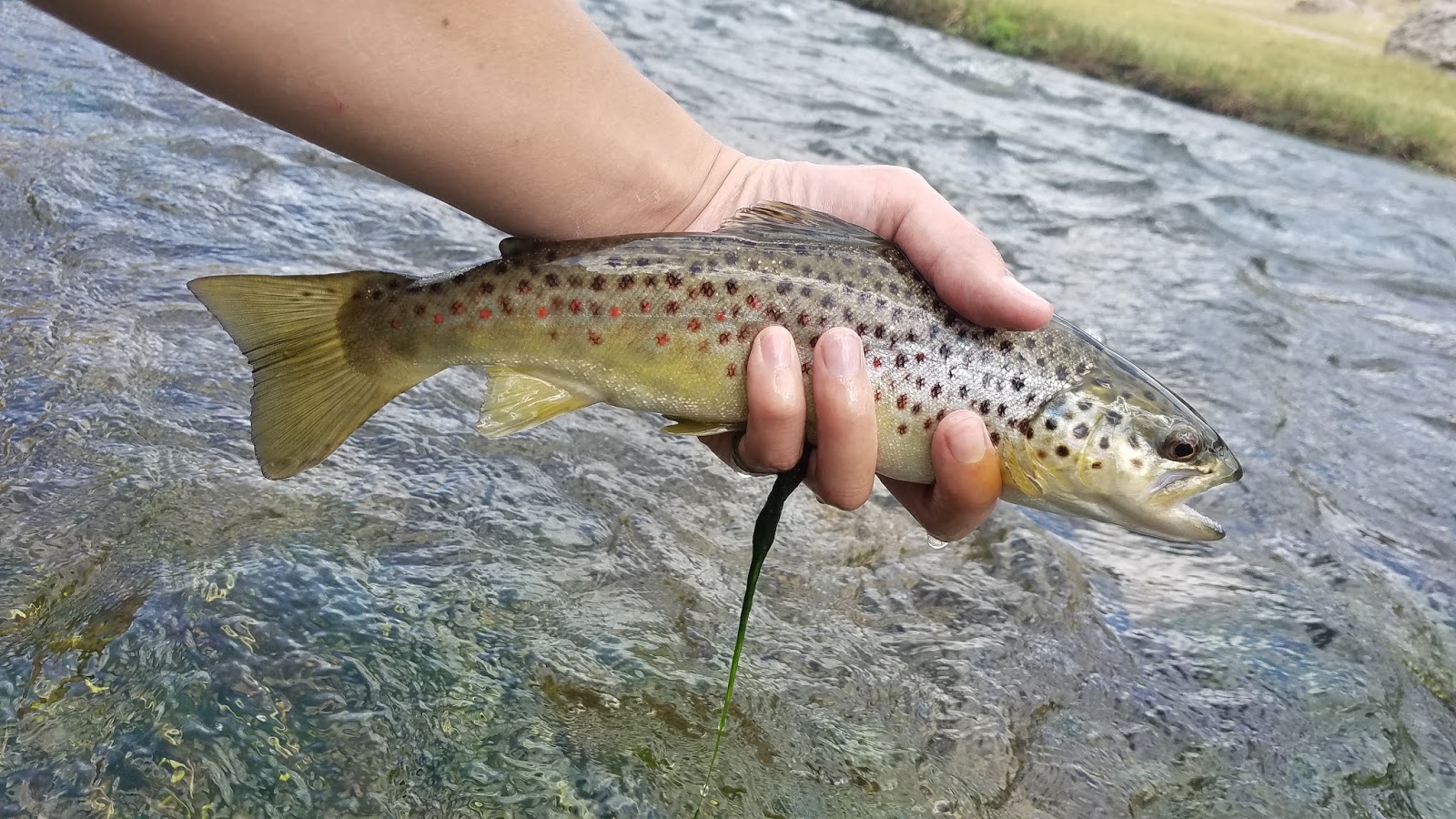 |
| Hot Creek Brown |
After about two hours of fishing a thunderstorm rolled in and put the fish down. I switched to a hopper dropper and hooked a big 20” rainbow but lost it in the faster current. Once the rain started coming down I decided to head to Mammoth Lakes to get something to eat.
I returned later in the evening to check out the most northern end of the public access section. The hopper dropper wasn’t working anymore so I had wait a bit for the fish to turn onto the caddis that were fluttering near the banks. After catching a few small trout on dries I switched to a streamer pattern to try my luck at finding a Hot Creek trophy. I covered most of the creek and was able to hook two browns and land one.
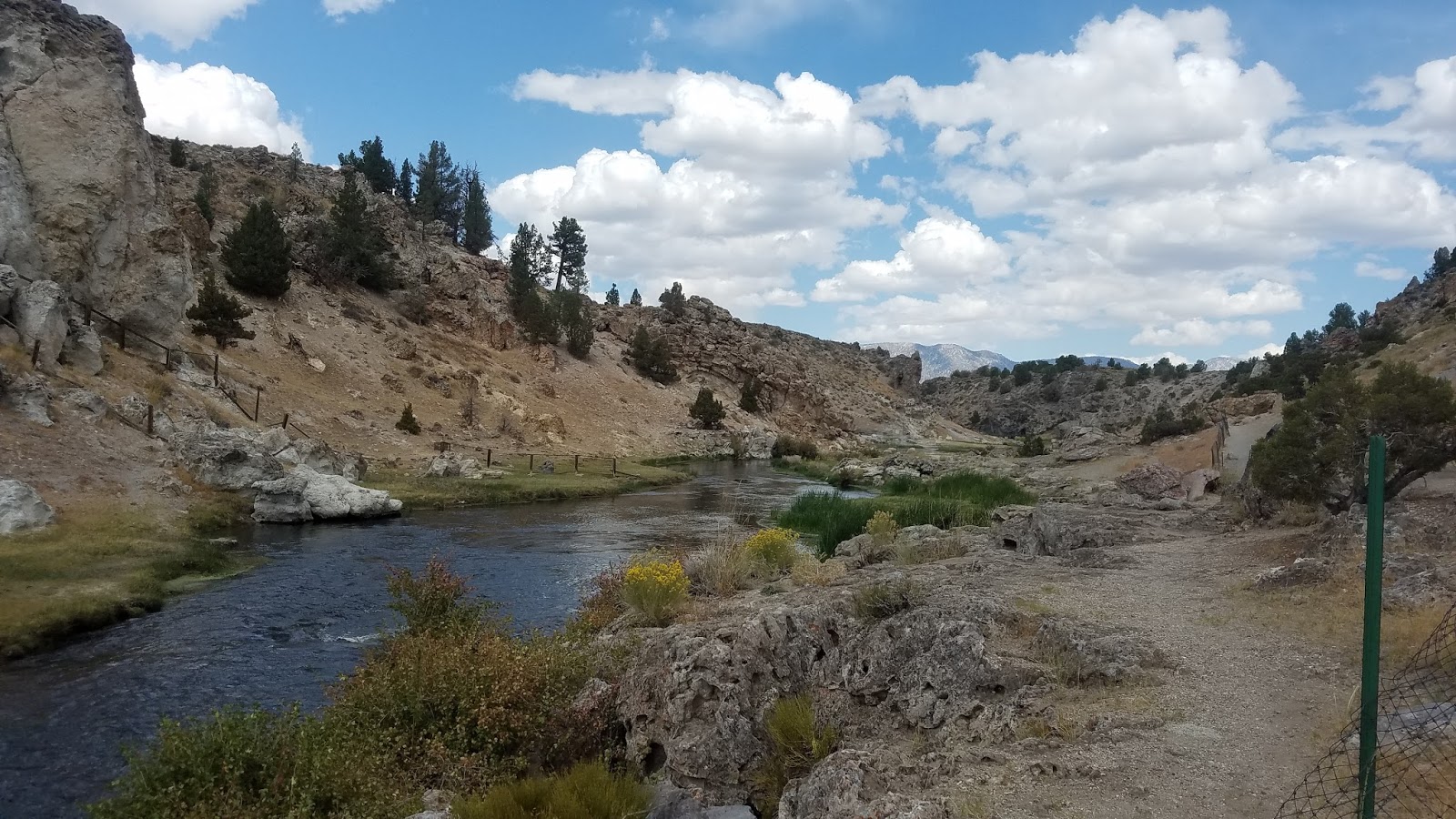 |
| Looking South On Hot Creek |
Hot Creek was a pretty cool place to visit and fish. It was amazing to see just how many fish inhabit this small stretch. The geological formations that surround Hot Creek makes this fishery a must visit for those who have never been.
The Eastern Sierras was quite the trip. I plan on doing it again someday focusing on some of the great stillwaters in the area.














